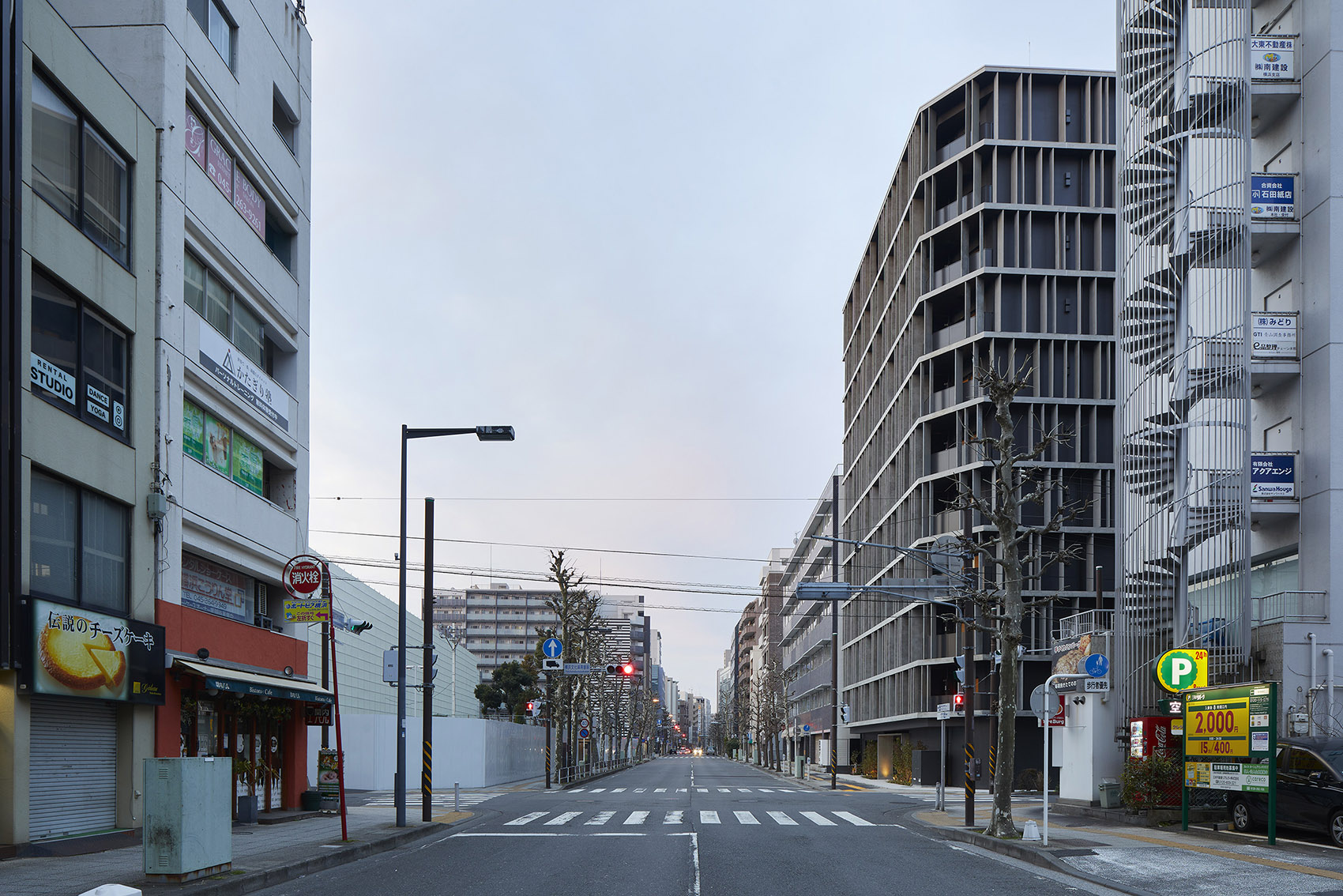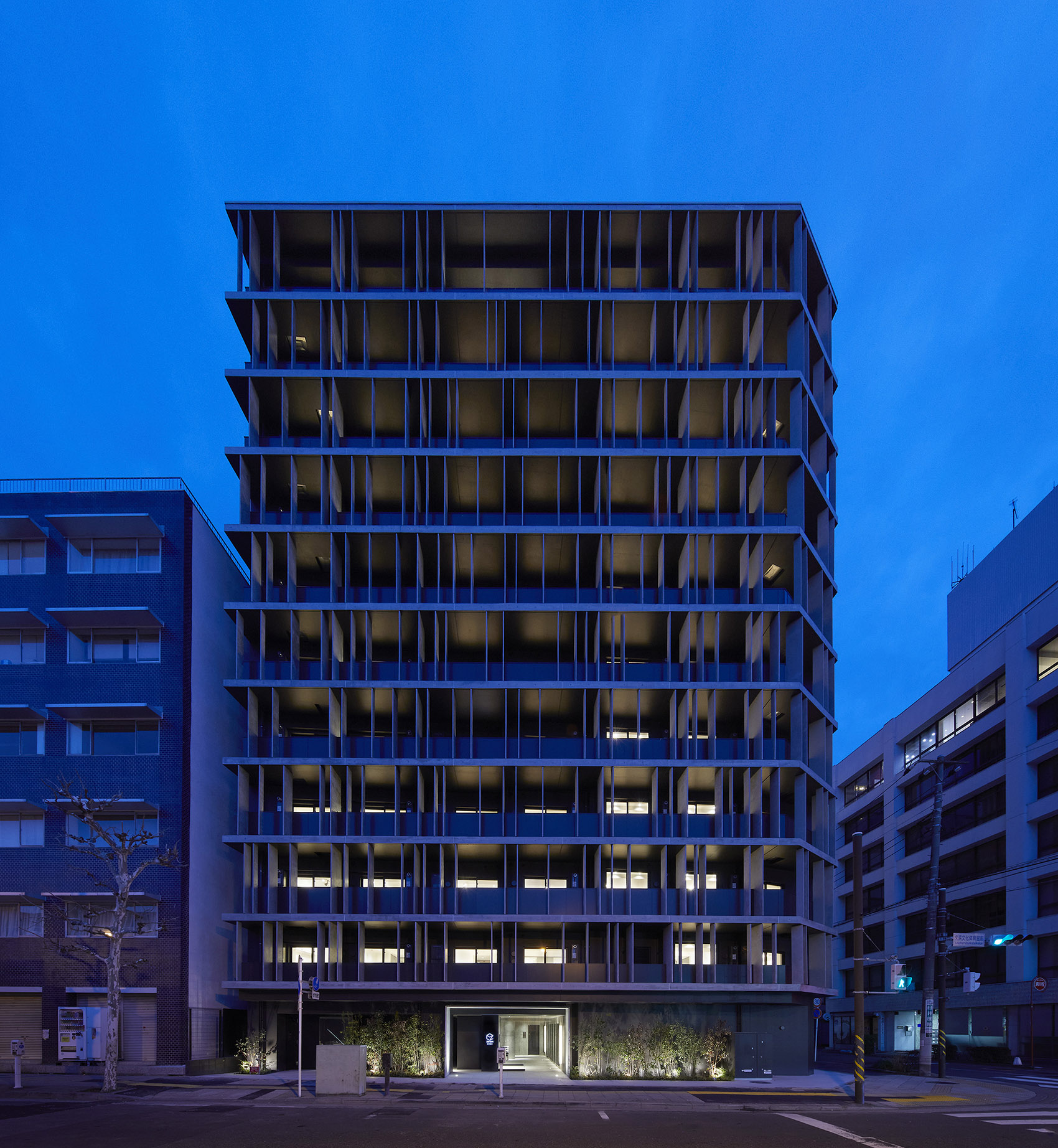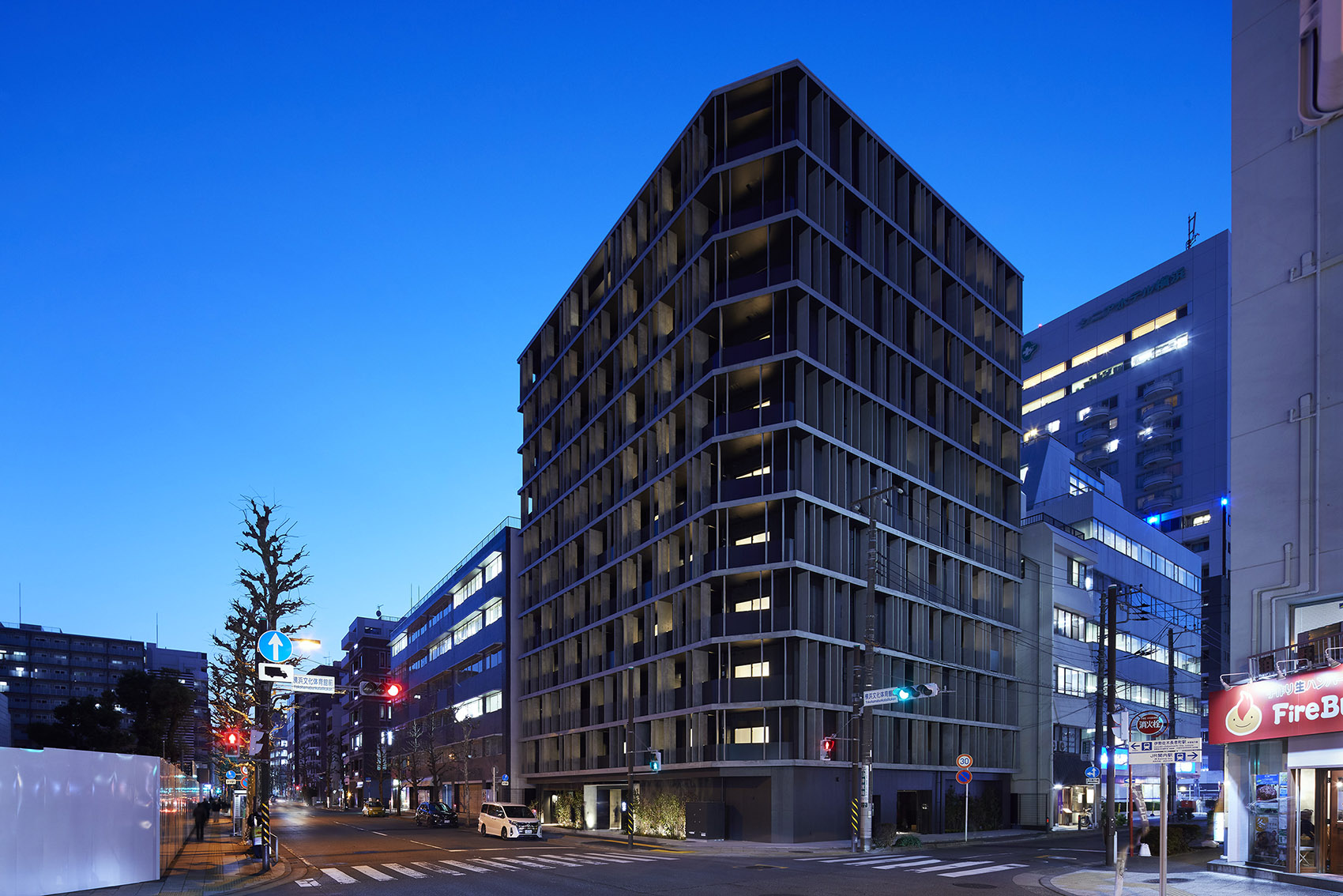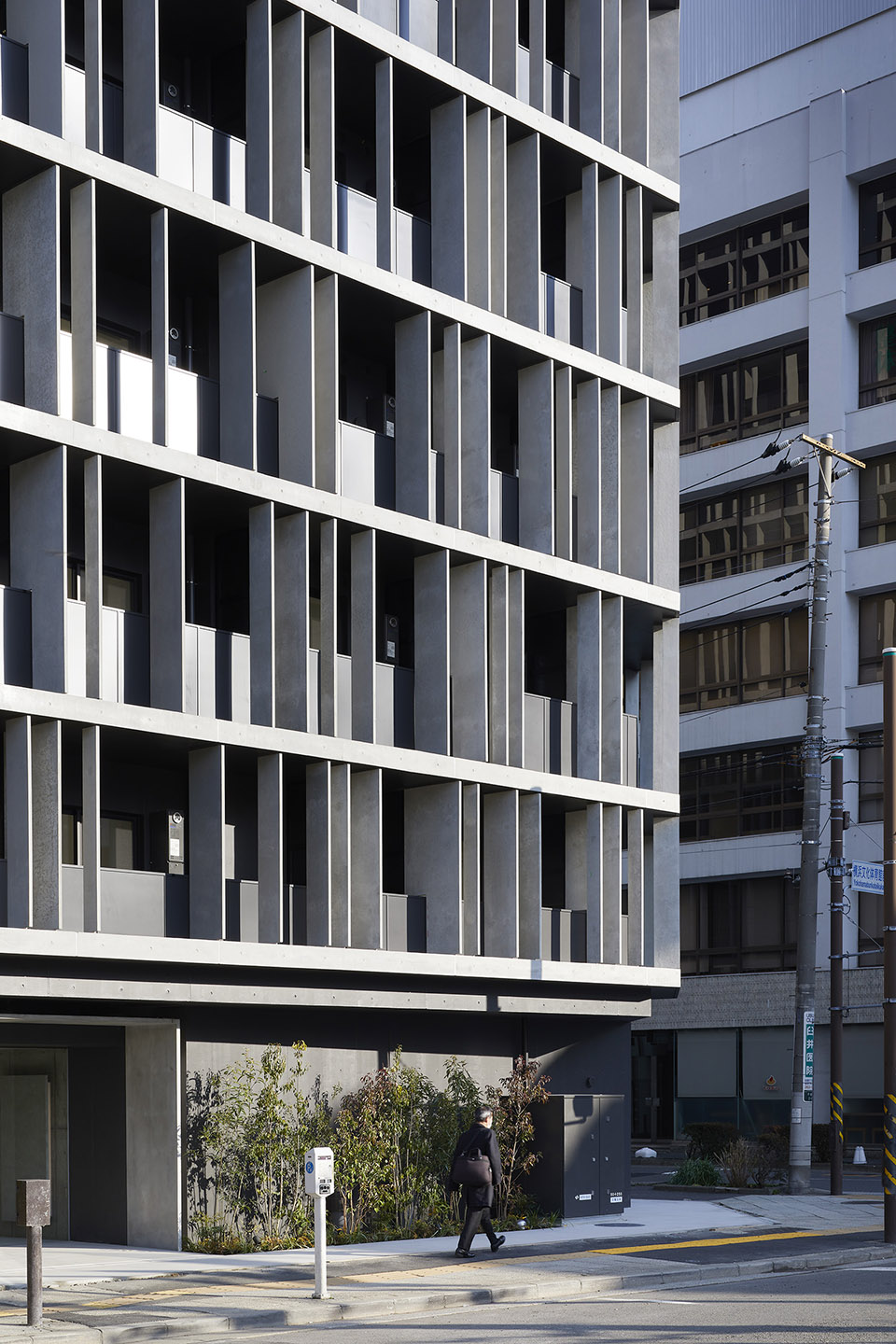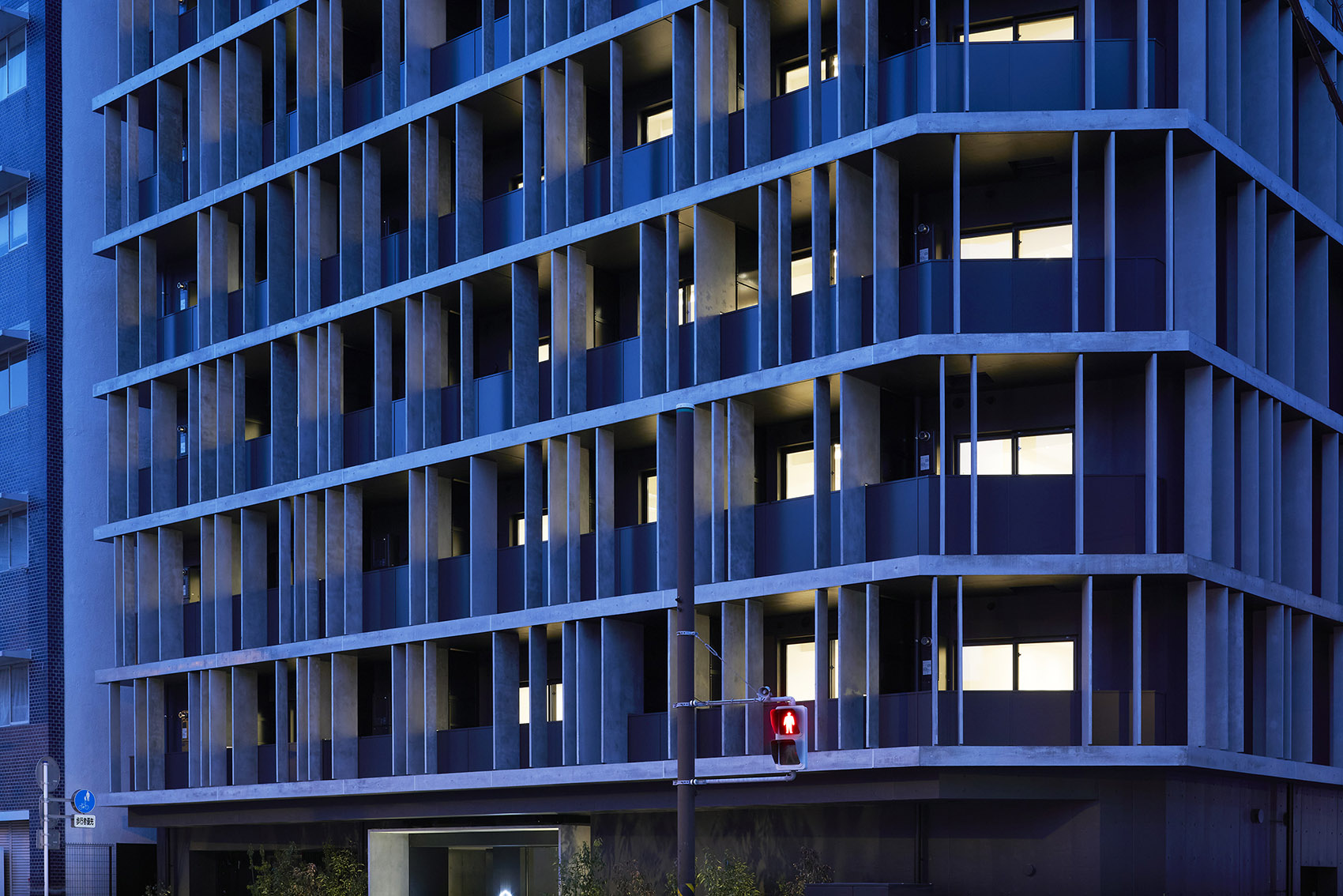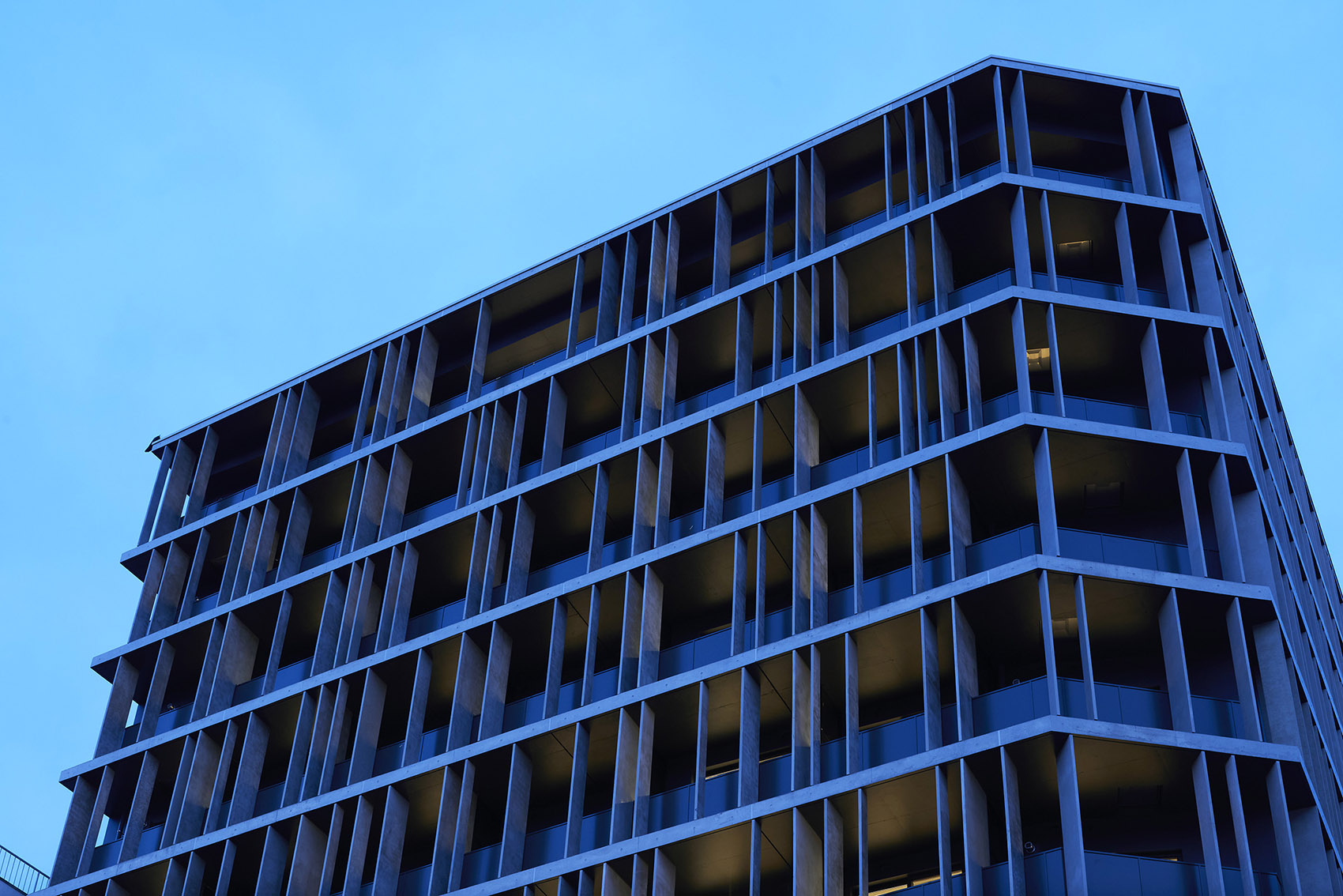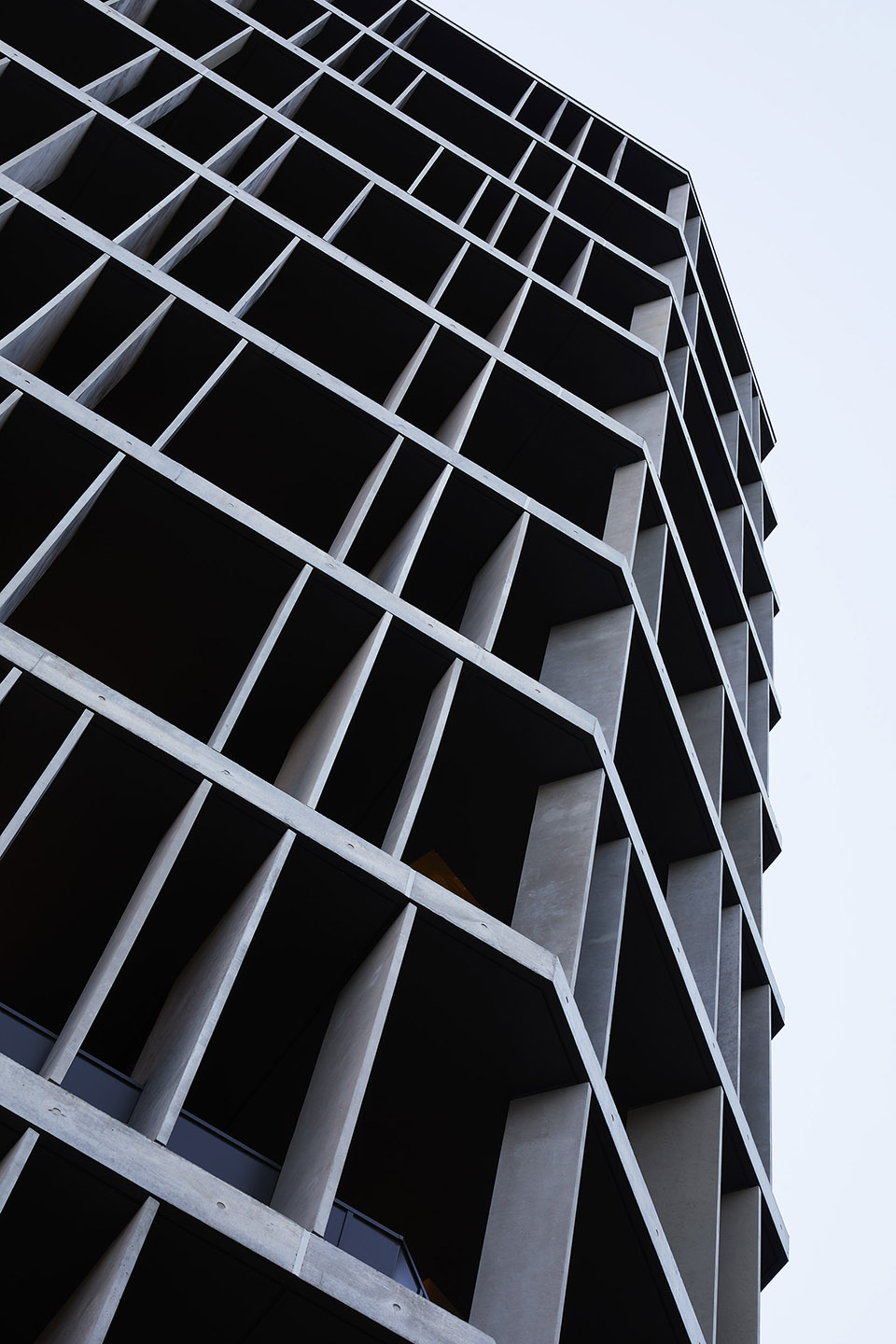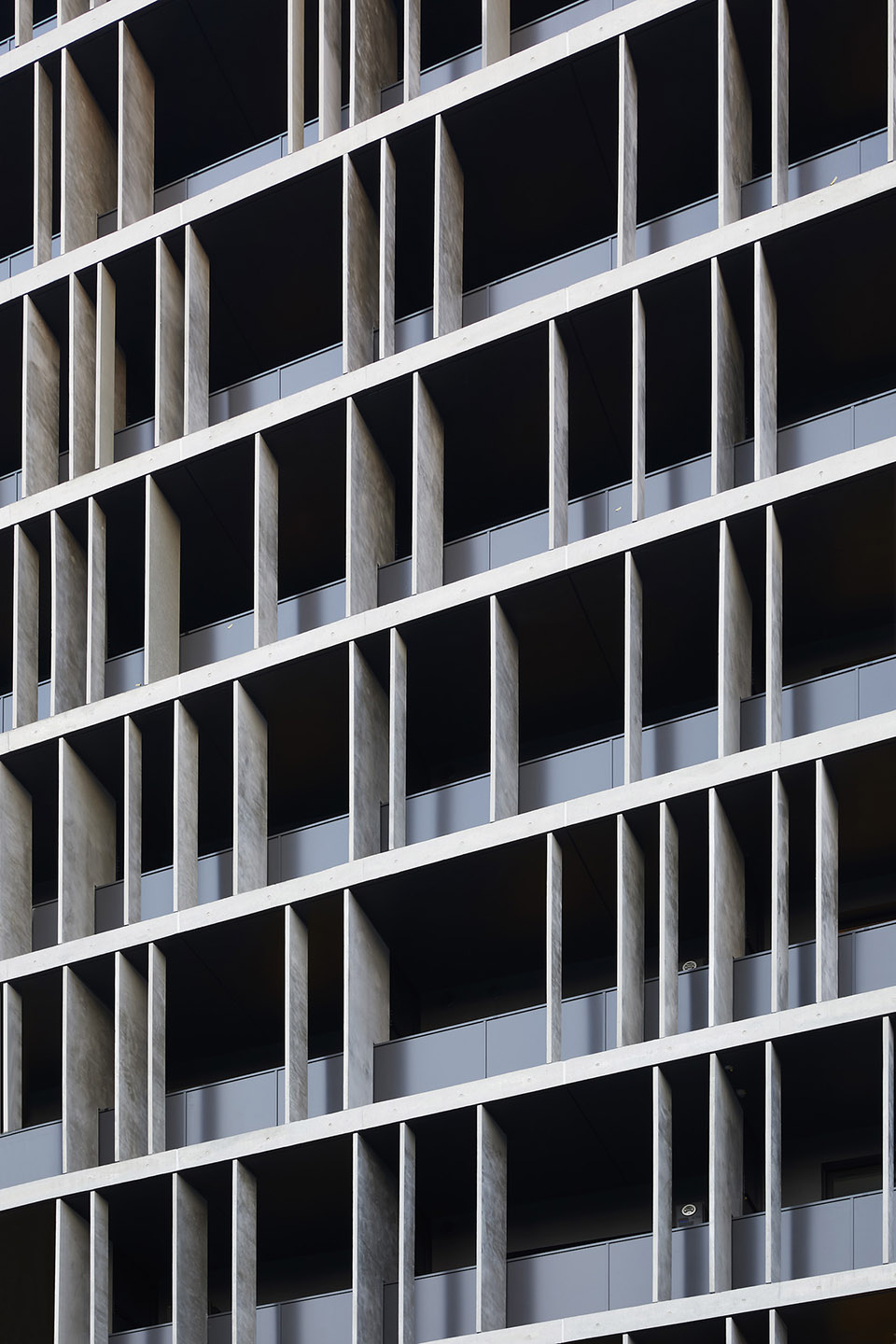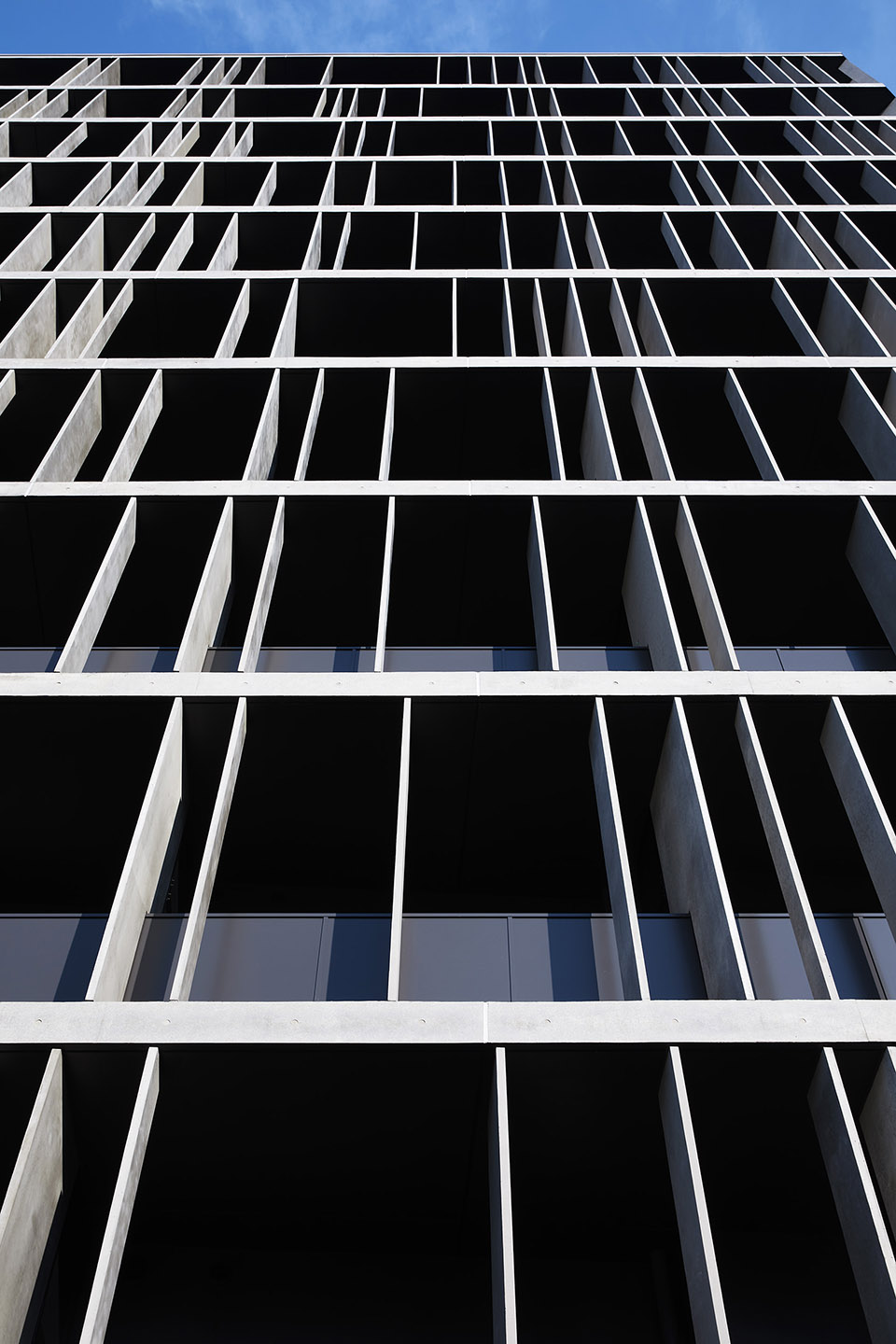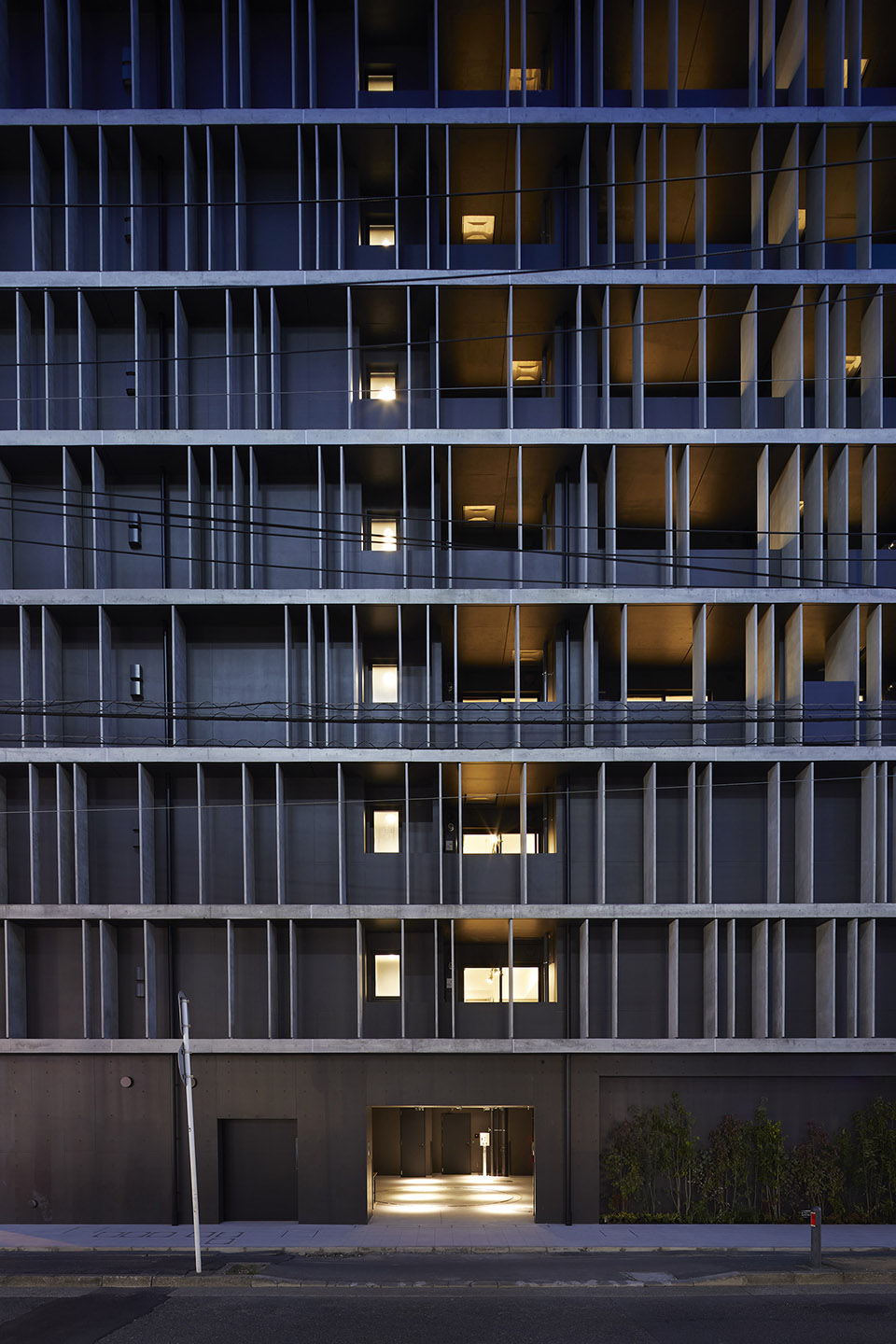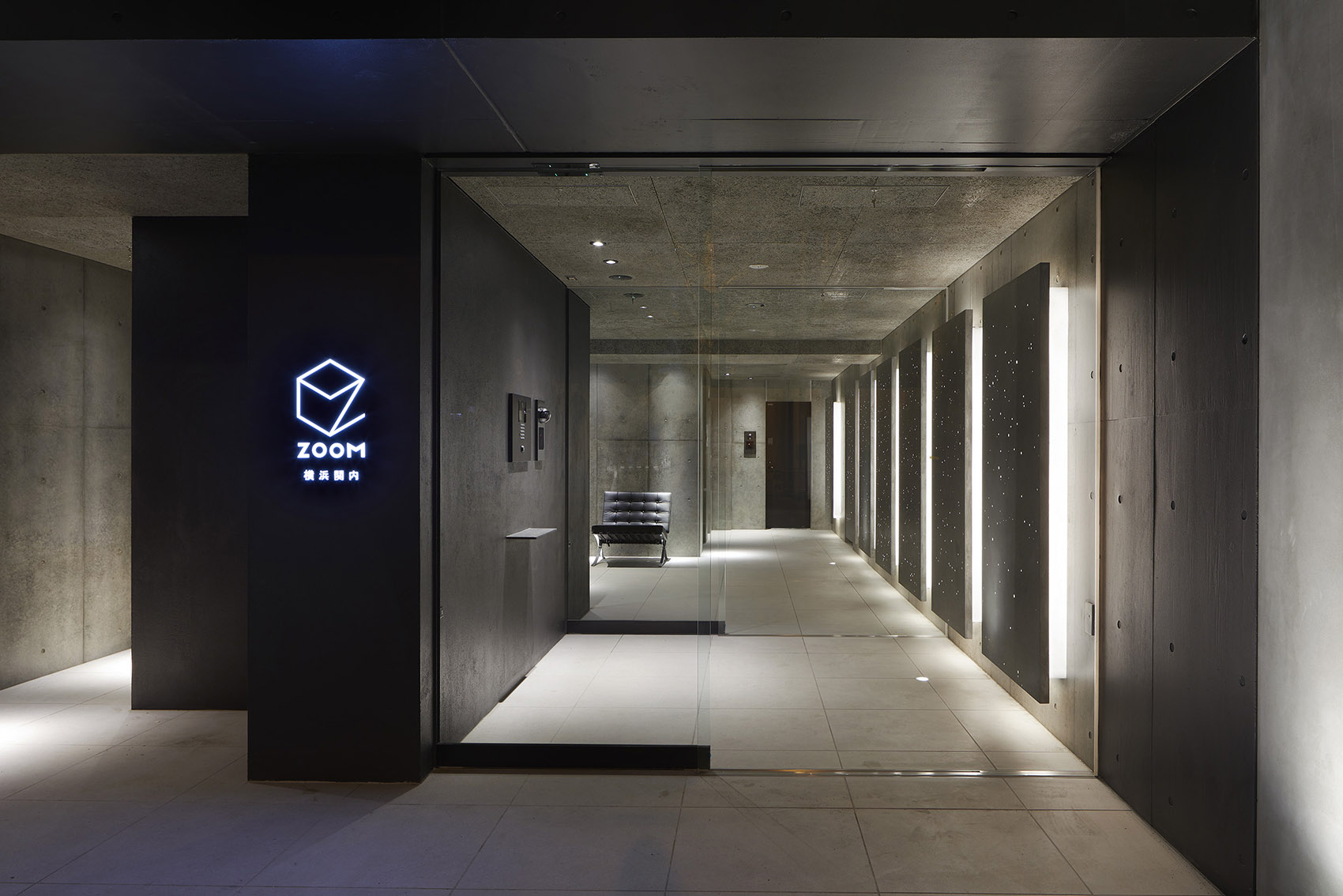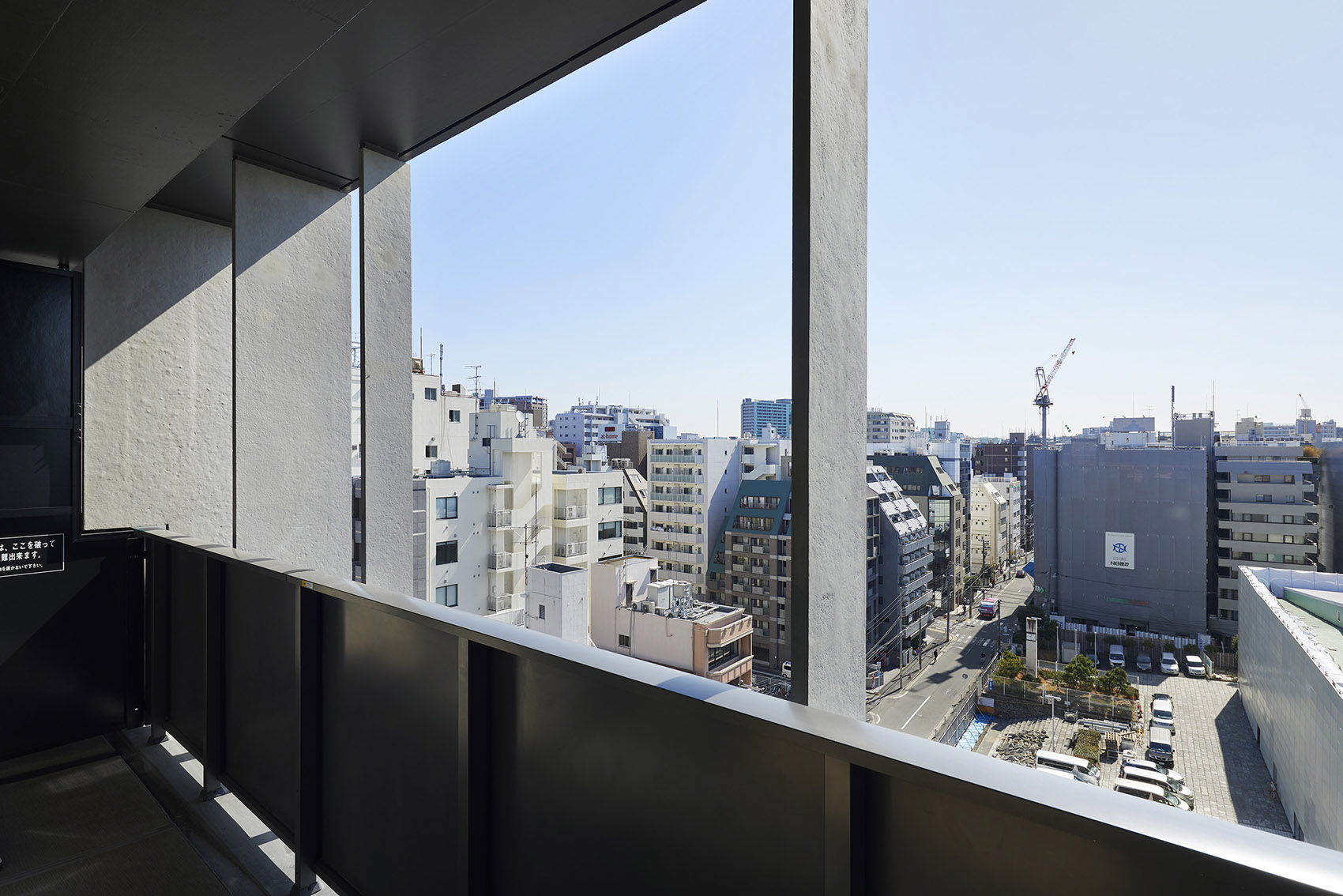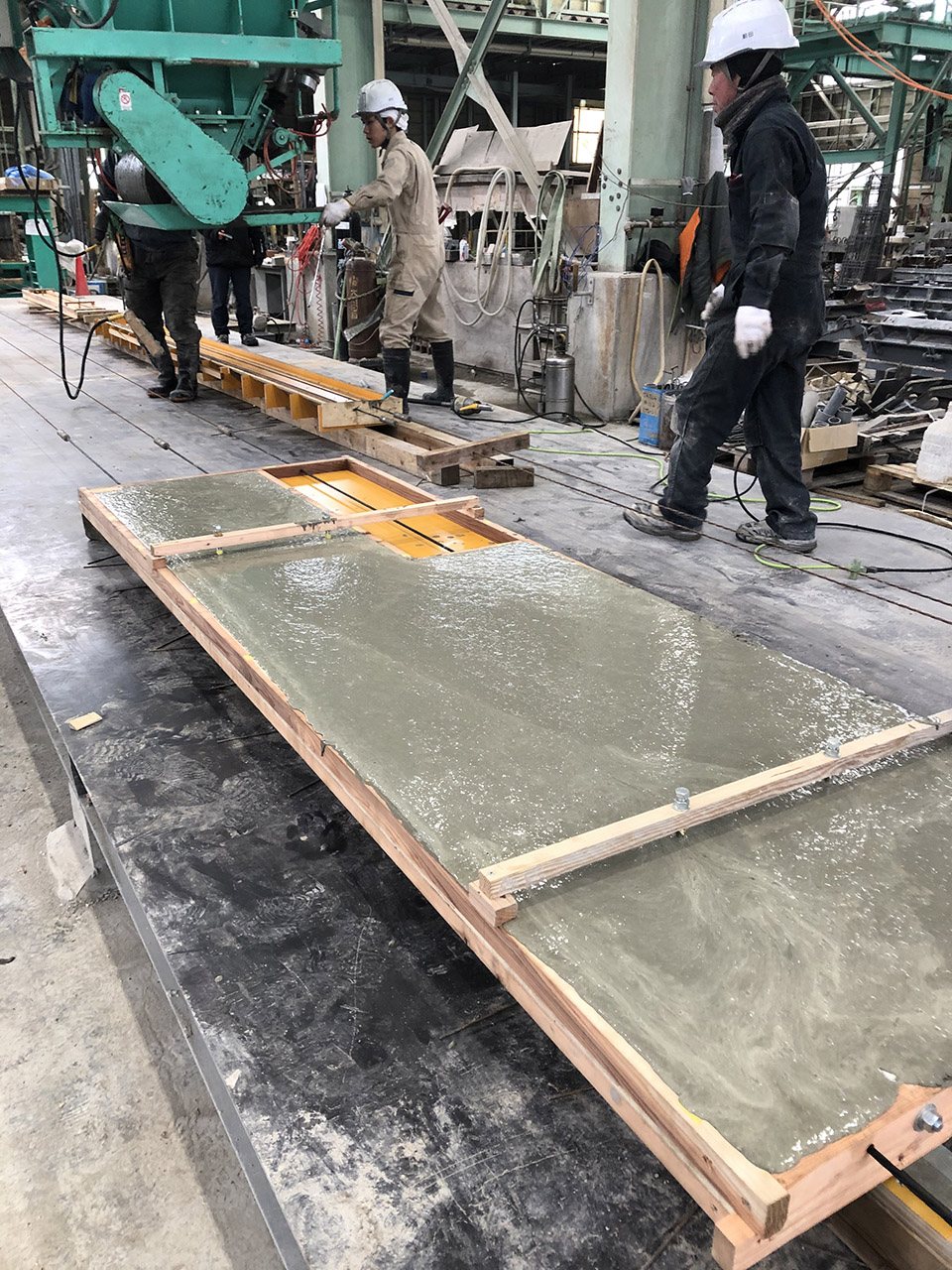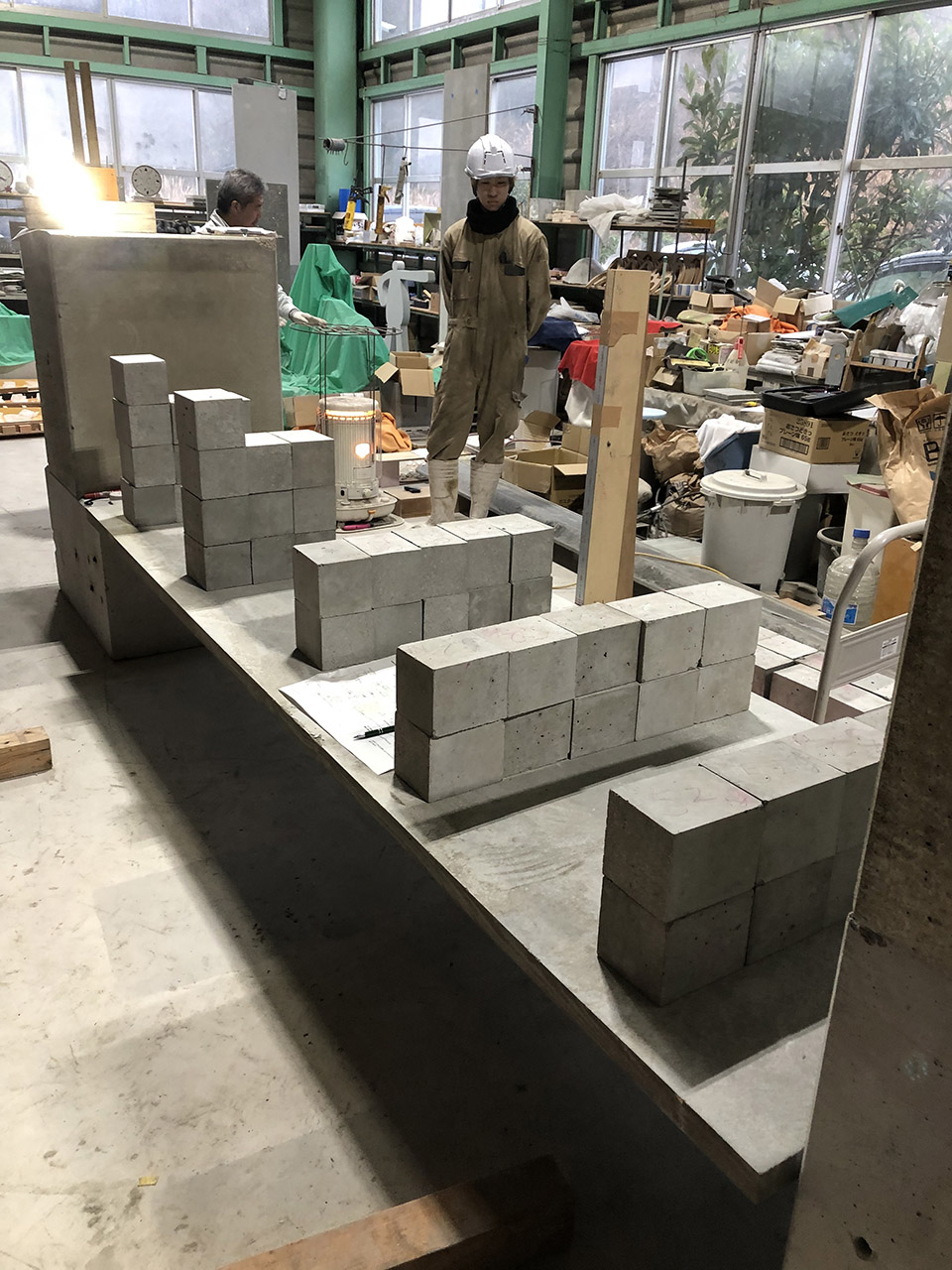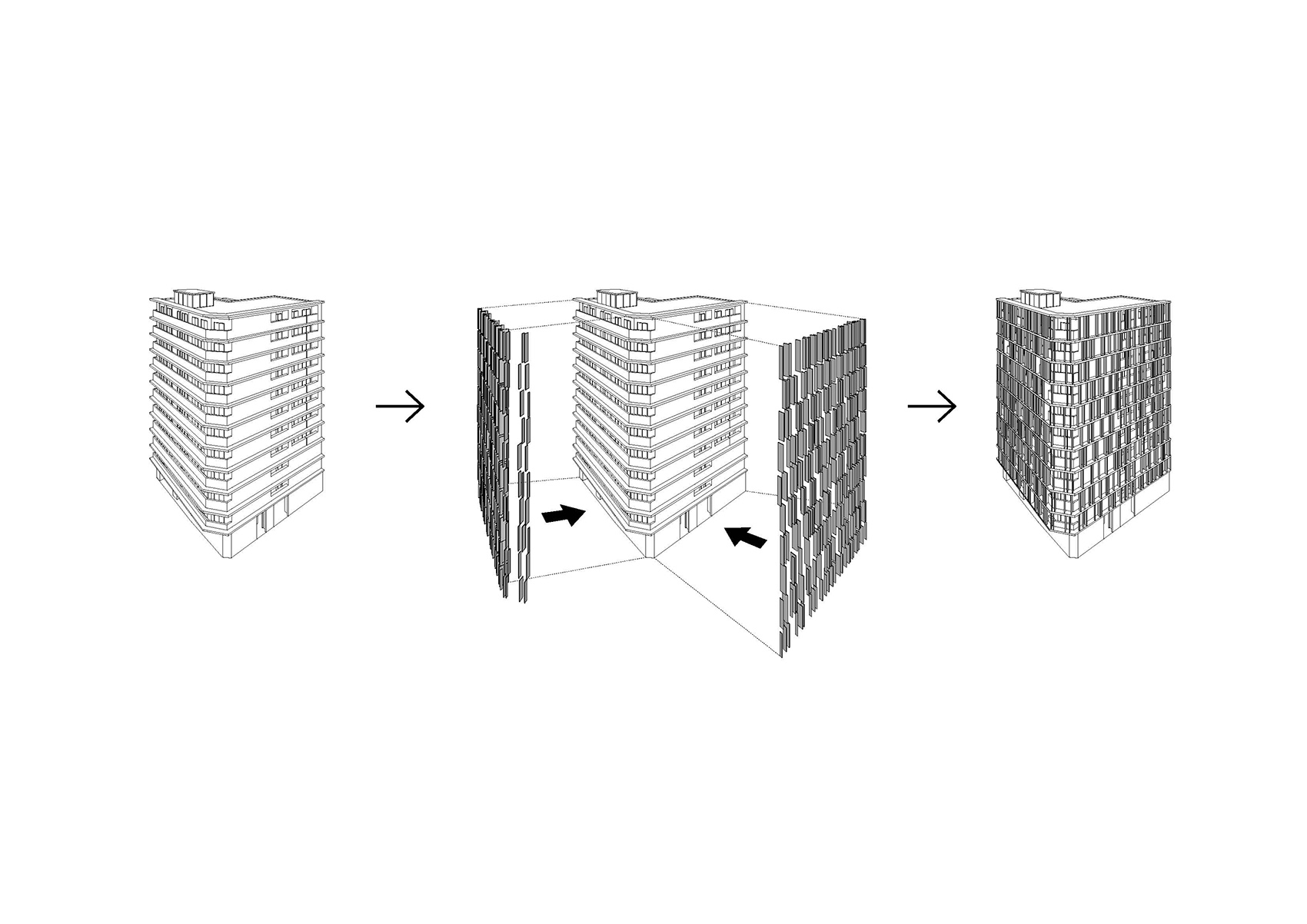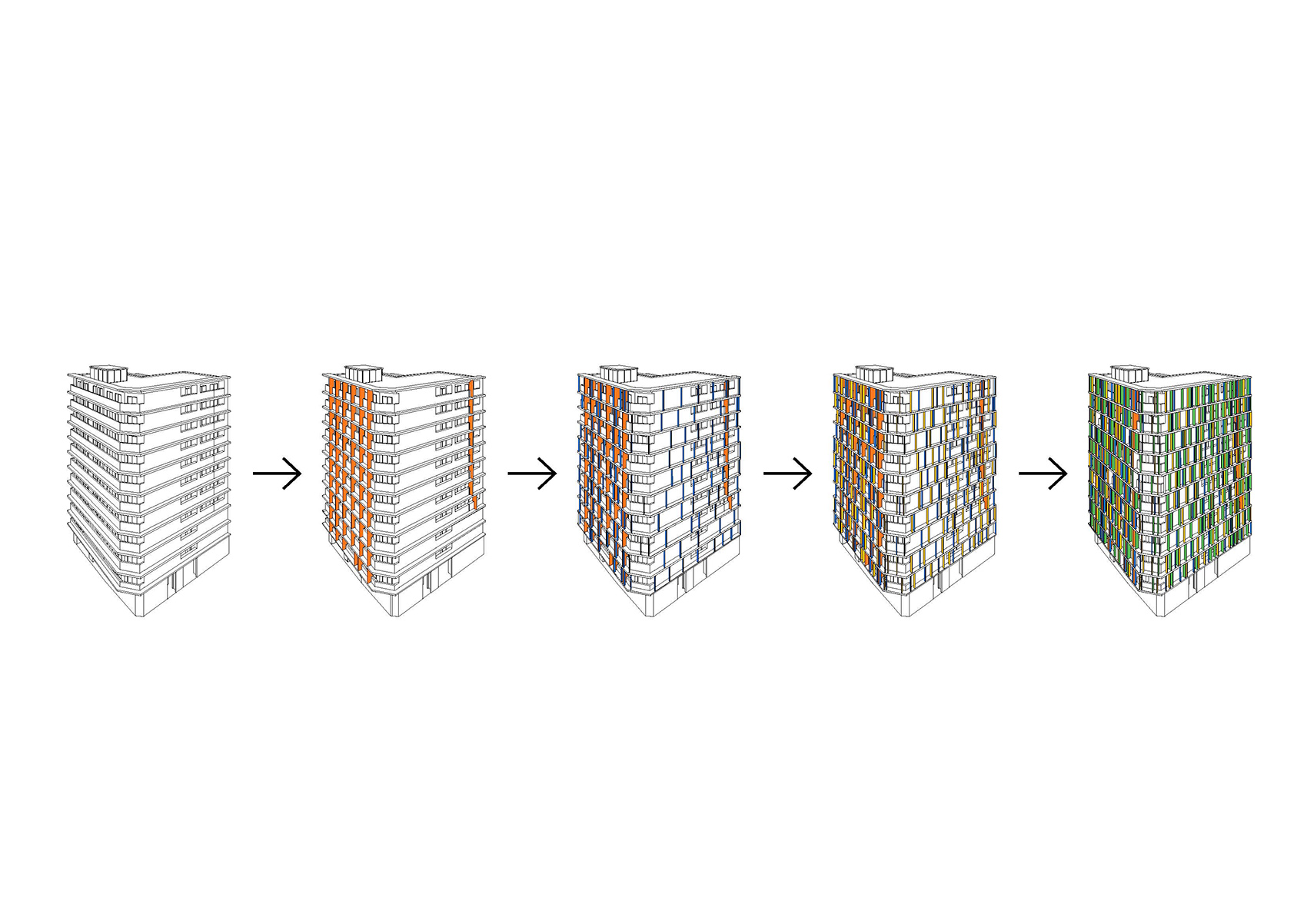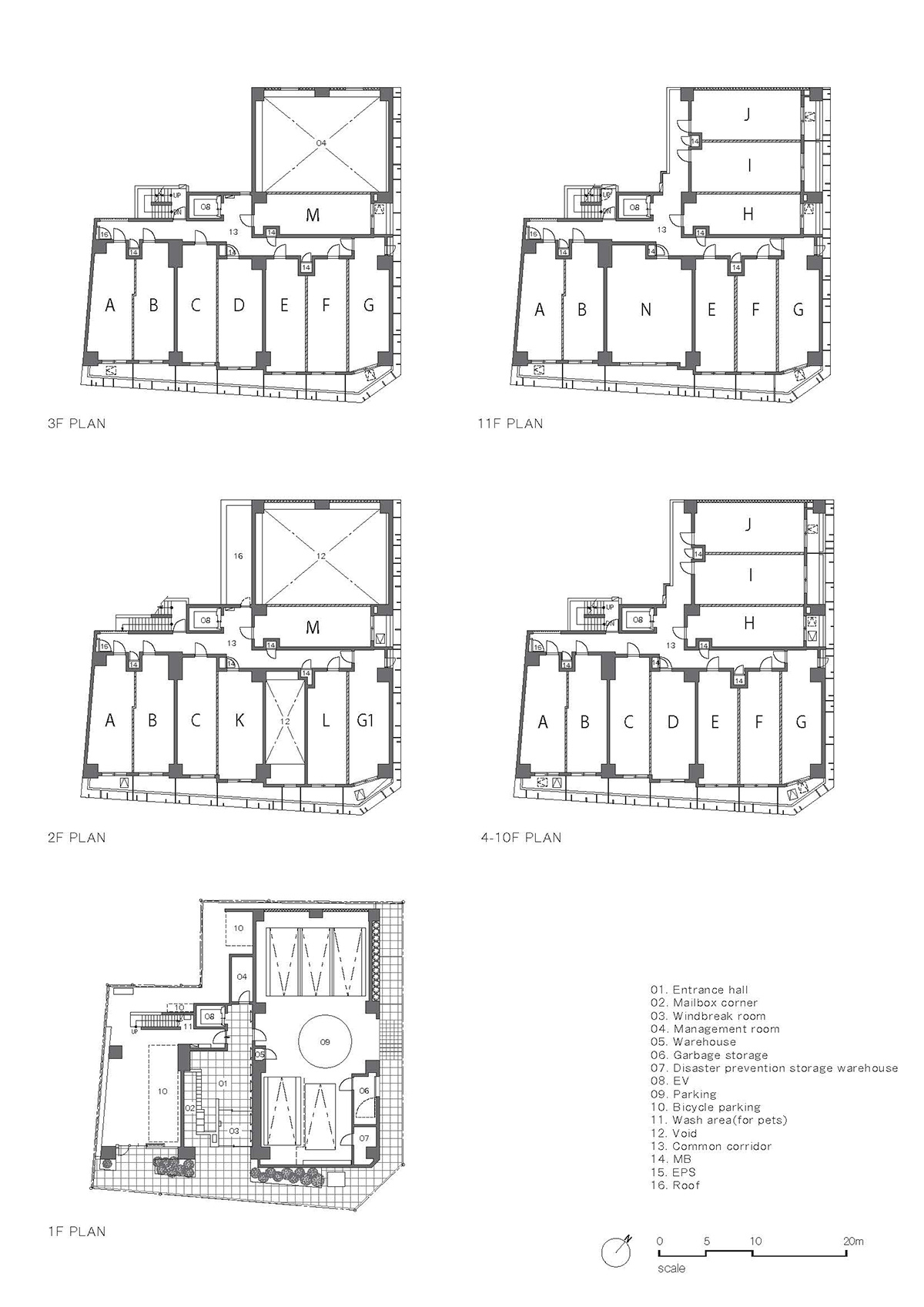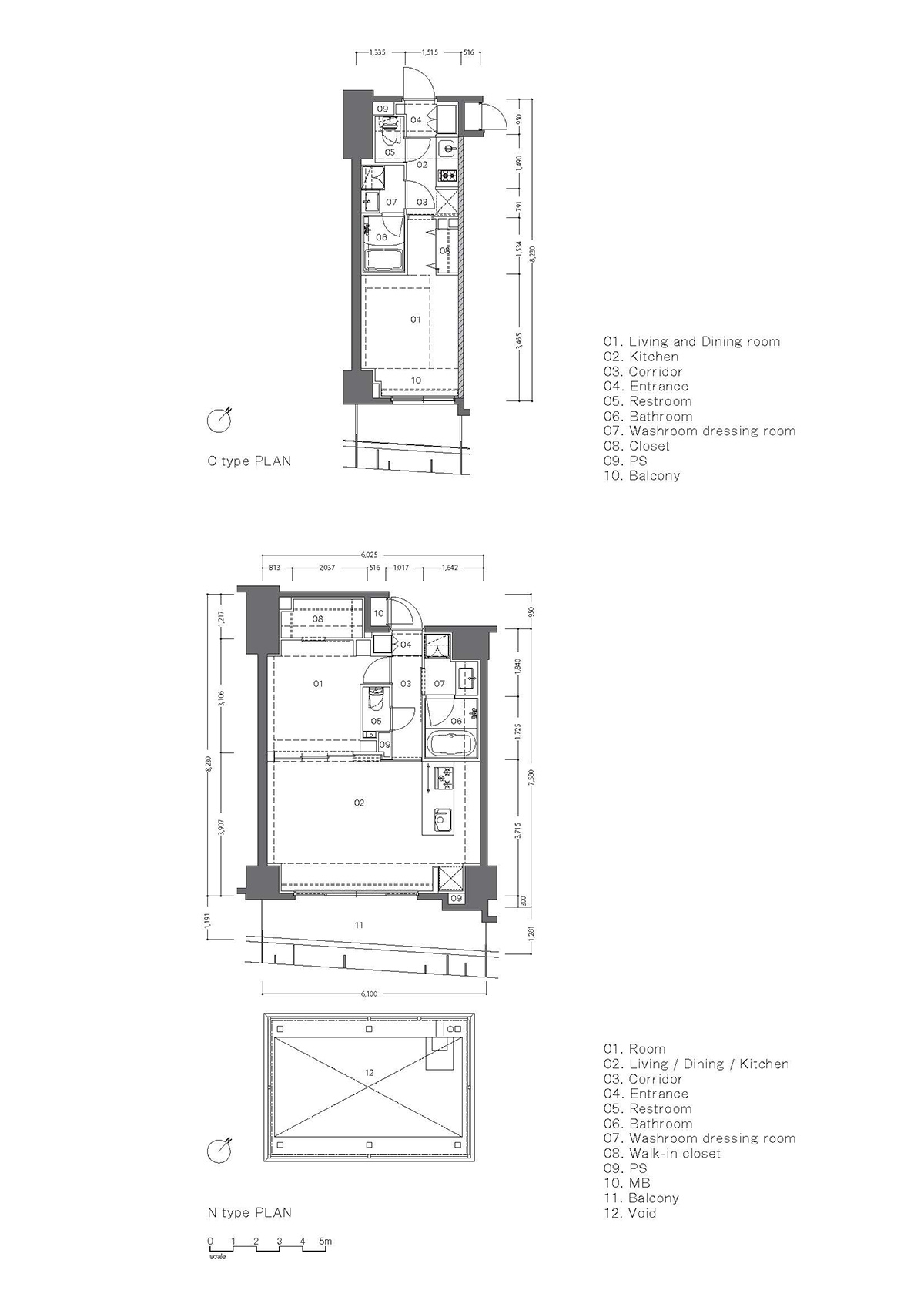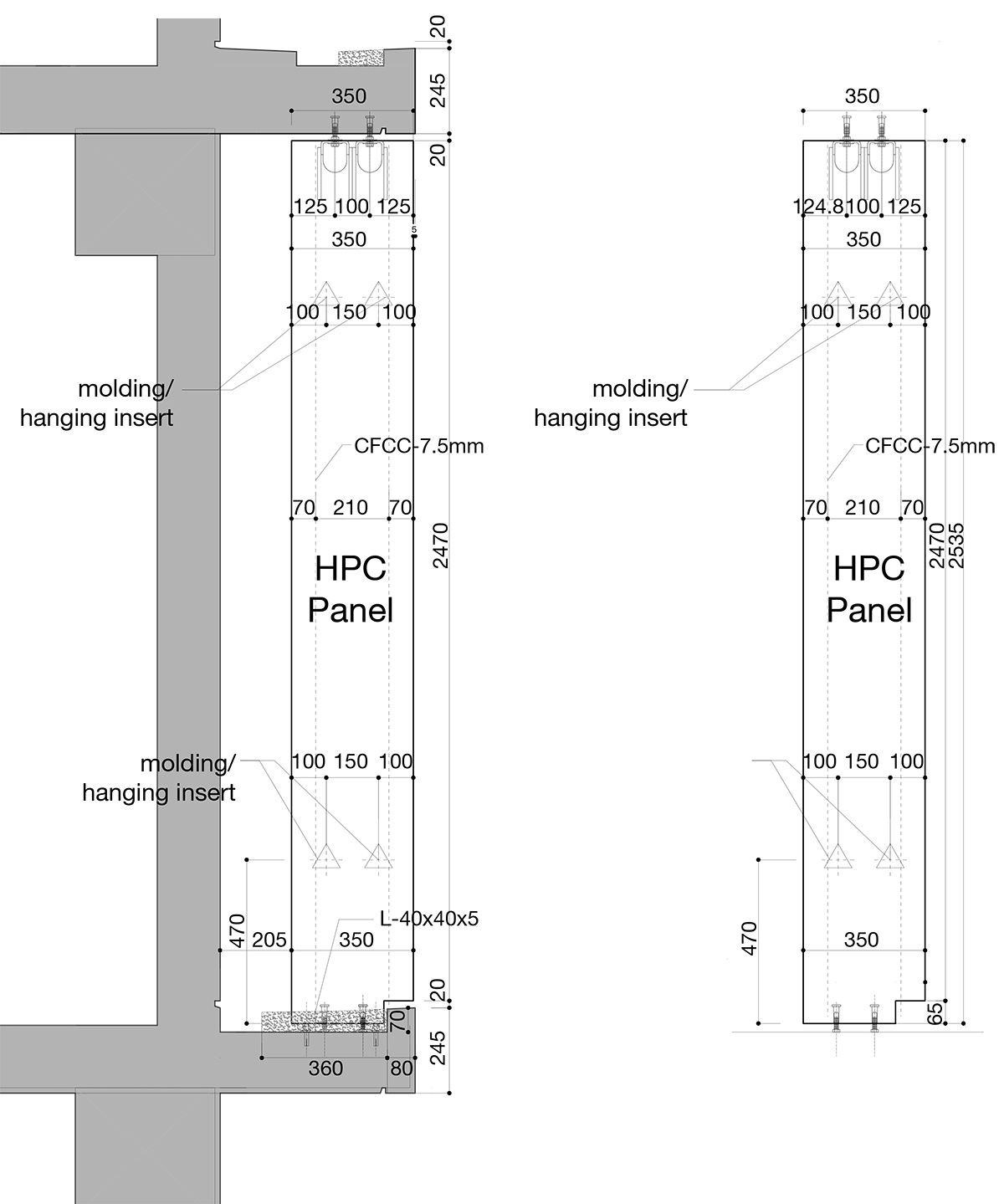关内集合住宅(Kannai Blade)的名称源于其外立面上的一系列纤薄的混凝土叶片。该建筑由KEY OPEARATION INC. / ARCHITECTS设计,位于横滨市的一个街区转角处,距离便捷的横滨关内火车站仅有5分钟的步行路程,且与东京市中心相距不远。
The Kannai Blade Residence – so called because its facades are intersected with thin, bladelike concrete fins – has been designed by the Japanese architectural studio KEY OPEARATION INC. / ARCHITECTS. It sits on a corner site within a 5-minute walk of the well-connected Yokohama Kannai Train Station, not far from central Tokyo.
▼项目外观,exterior view © Toshiyuki Yano
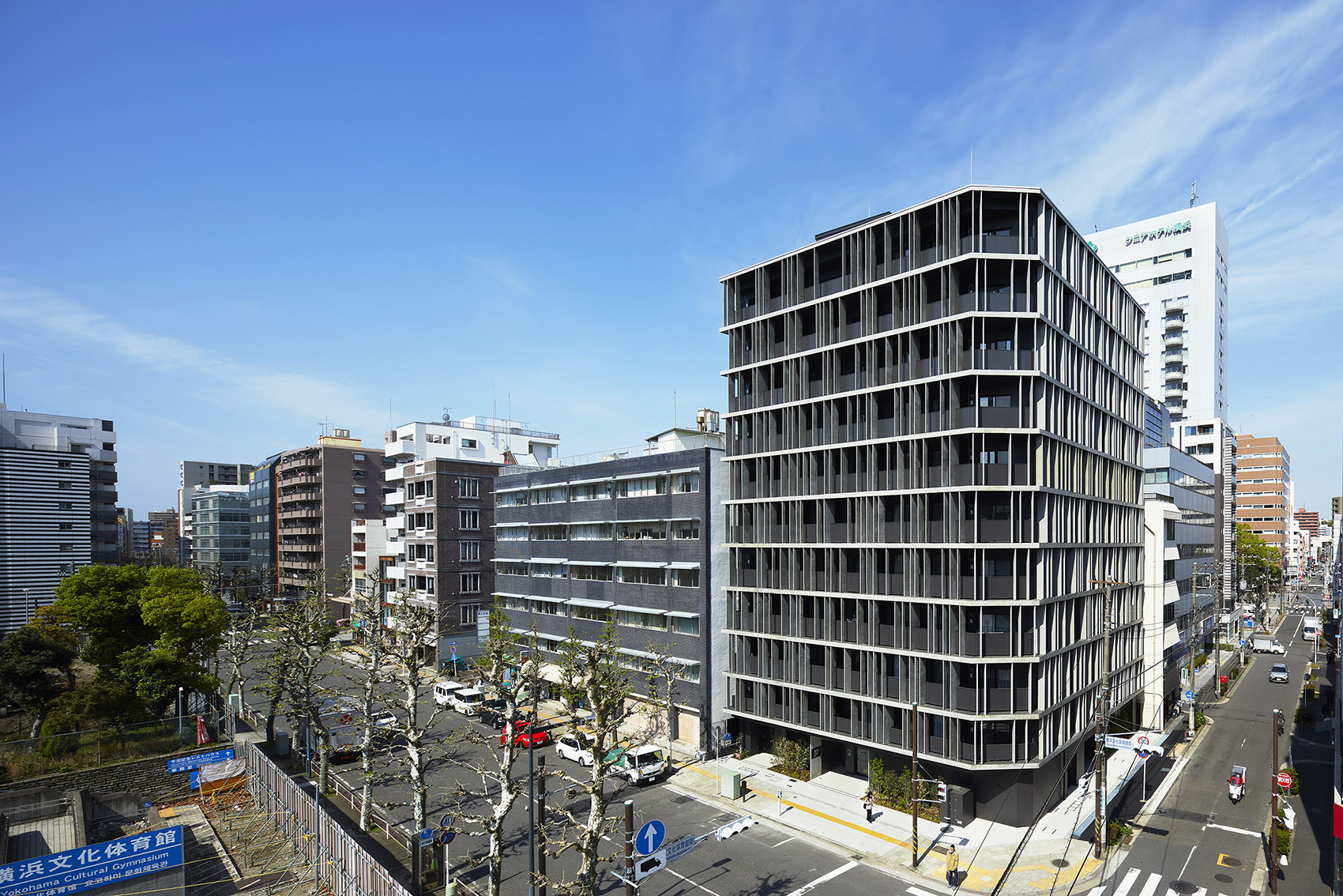
▼屋顶鸟瞰,aerial view © Toshiyuki Yano
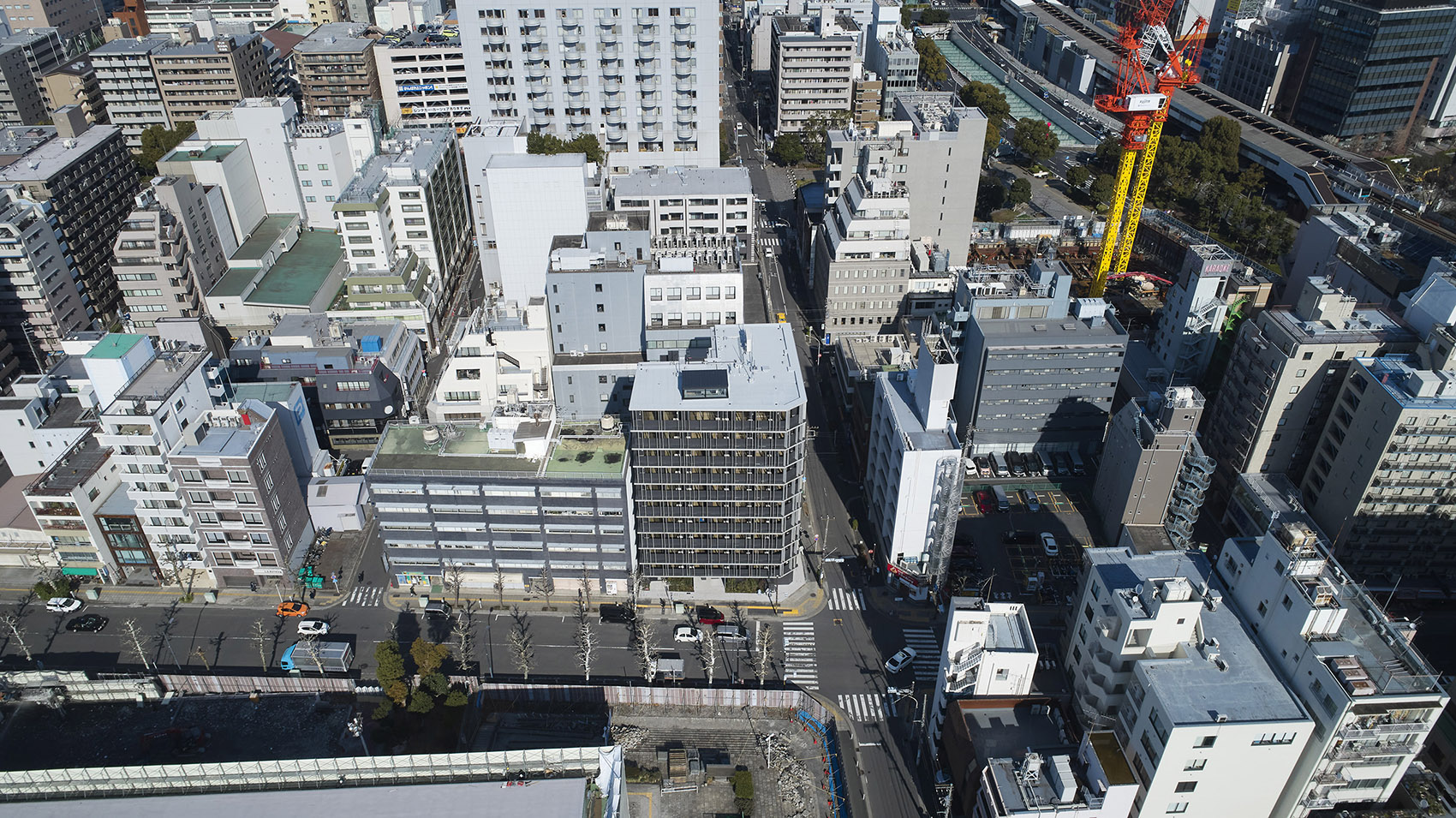
住宅楼共包含11个楼层,它取代了原先建造于战后时期的4层办公大楼“不老町2丁目第一共同大楼”。原先的建筑由Miyauchi Architects设计,采用了当时典型的低层混凝土结构,起到防火屏障的作用。
The new 11-storey housing block replaces the 4-storey post-war office building known as “Furocho 2-chome Daiichi Kyodo Building.” The original building was designed by Miyauchi Architects in a style typical of the time, built in concrete, characteristically robust and low-rise, functioning as a firebreak. During WWII, much of Yokohama City was razed to the ground leading to the government-sponsored reconstruction efforts to comply with strict fire regulations.
The same area is currently facing rapid changes through Private Finance Initiative, PFI, funded redevelopment. The site across the street from the Kannai Blade Residence will accommodate the new Yokohama United Arena, remodelled after the Yokohama Cultural Gymnasium (built in time for 1964 Tokyo Olympics and demolished in 2020). In the vicinity, a new campus building for Kantou Gakuin University is nearing completion. This is being built on the site that used to accommodate Kunio Maekawa’s Cultural Educational Centre, built in 1974, now demolished after it was deemed that the structure was not compliant with today’s seismic standards.
▼大楼主立面,main facade of the building © Toshiyuki Yano
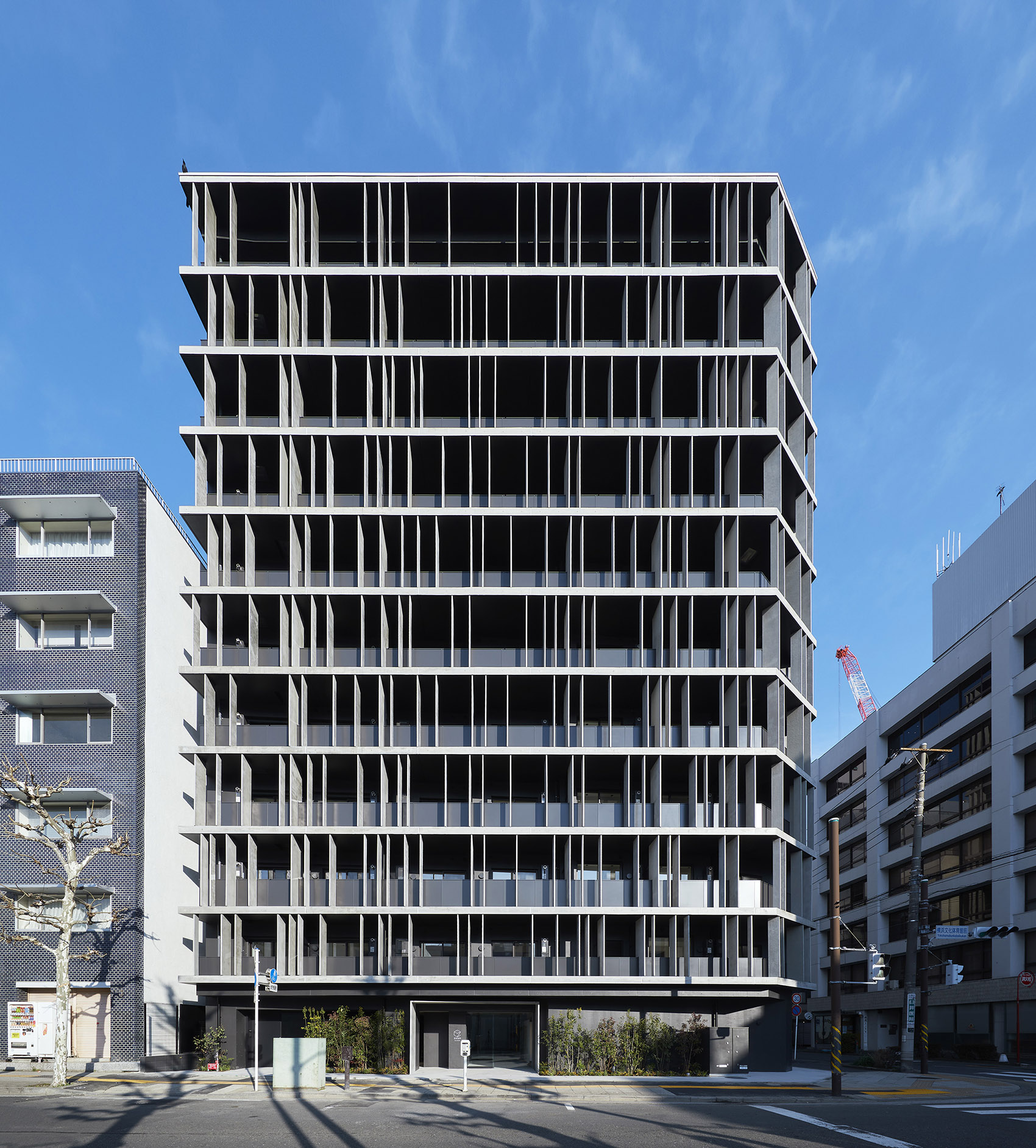
▼侧立面,lateral facade © Toshiyuki Yano

关内集合住宅包含94套小尺寸的私人单间公寓,面积介于22平方米到47平方米之间,适合单身人士或没有孩子的年轻夫妇居住。为了让建筑与其周围的其他战后建筑形成和谐的关系,设计团队的策略是通过强调混凝土楼板的使用来呼应该区域的水平线性特征,并在立面上置入了如纸般纤薄(约40mm厚)的混凝土叶片,起到打破单调、增添趣味的作用。
The Kannai Blade Residence consists of ninety-four privately-owned studio flats. The individual units are very small, with their floor areas ranging between 22m2 to 47m2. They are what the Japanese call ‘one-room mansion’ suitable for single dwellers or young couples without children. Because many of the post-war buildings still survive in this area, there is a uniformity rarely seen in other neighbourhoods of urban centres in Japan. Their low-rise, horizontal concrete structures, solid yet open and accessible, are very distinctive and can easily be spotted amongst today’s high-rise towers. The corner buildings abutting large streets (functioning as firebreaks) are usually chamfered, further emphasizing the area’s spacious feel and unusual uniformity. Particular attention was therefore paid to design a characterful building to match the post-war buildings surrounding it. Our strategy was to emphasize the concrete floor slabs in order to amplify and echo the area’s horizontal linearity. We also used the paper-thin concrete fins (40mm in thickness) to break the monotony and introduce playfulness.
▼街道视角,view from the street © Toshiyuki Yano
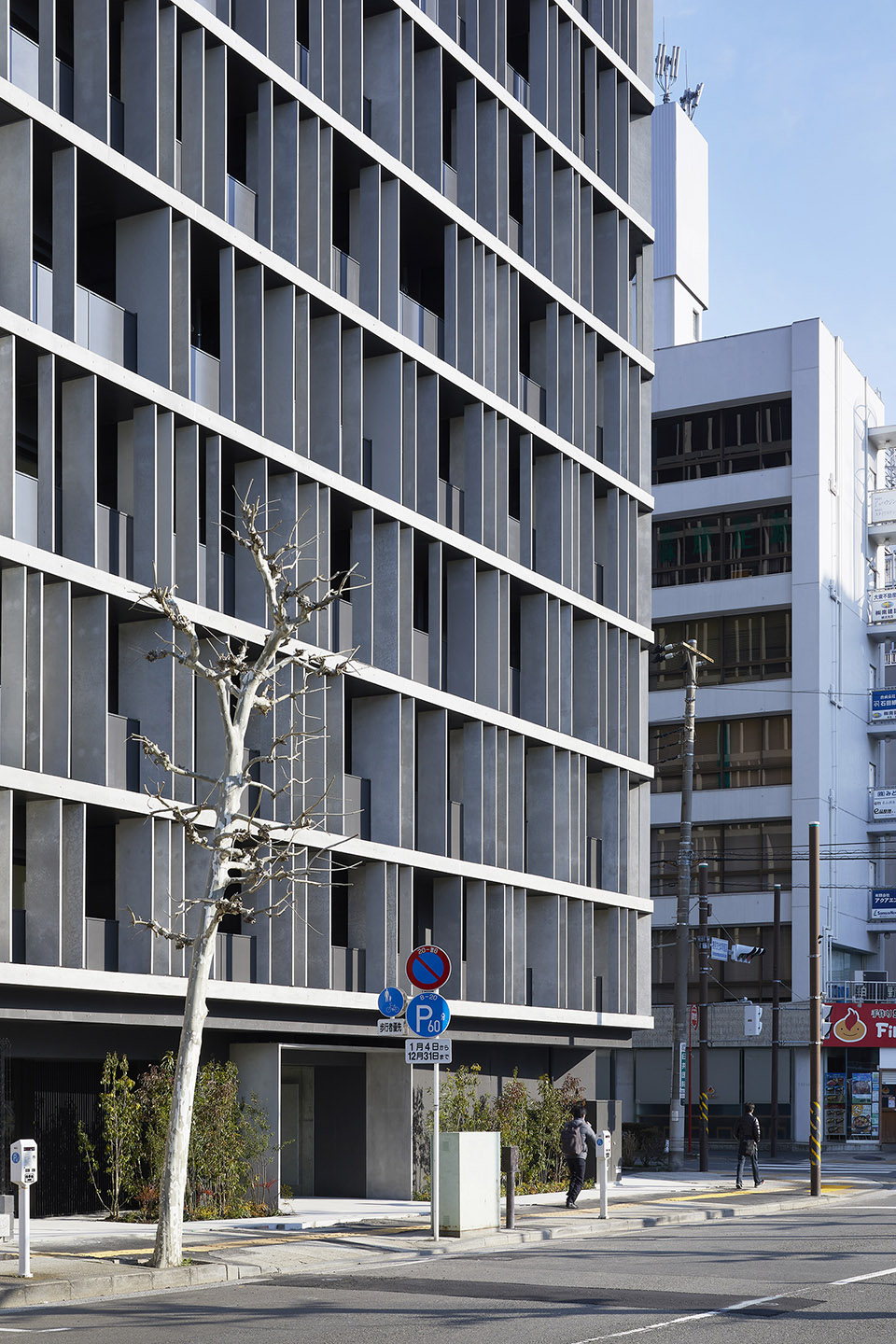
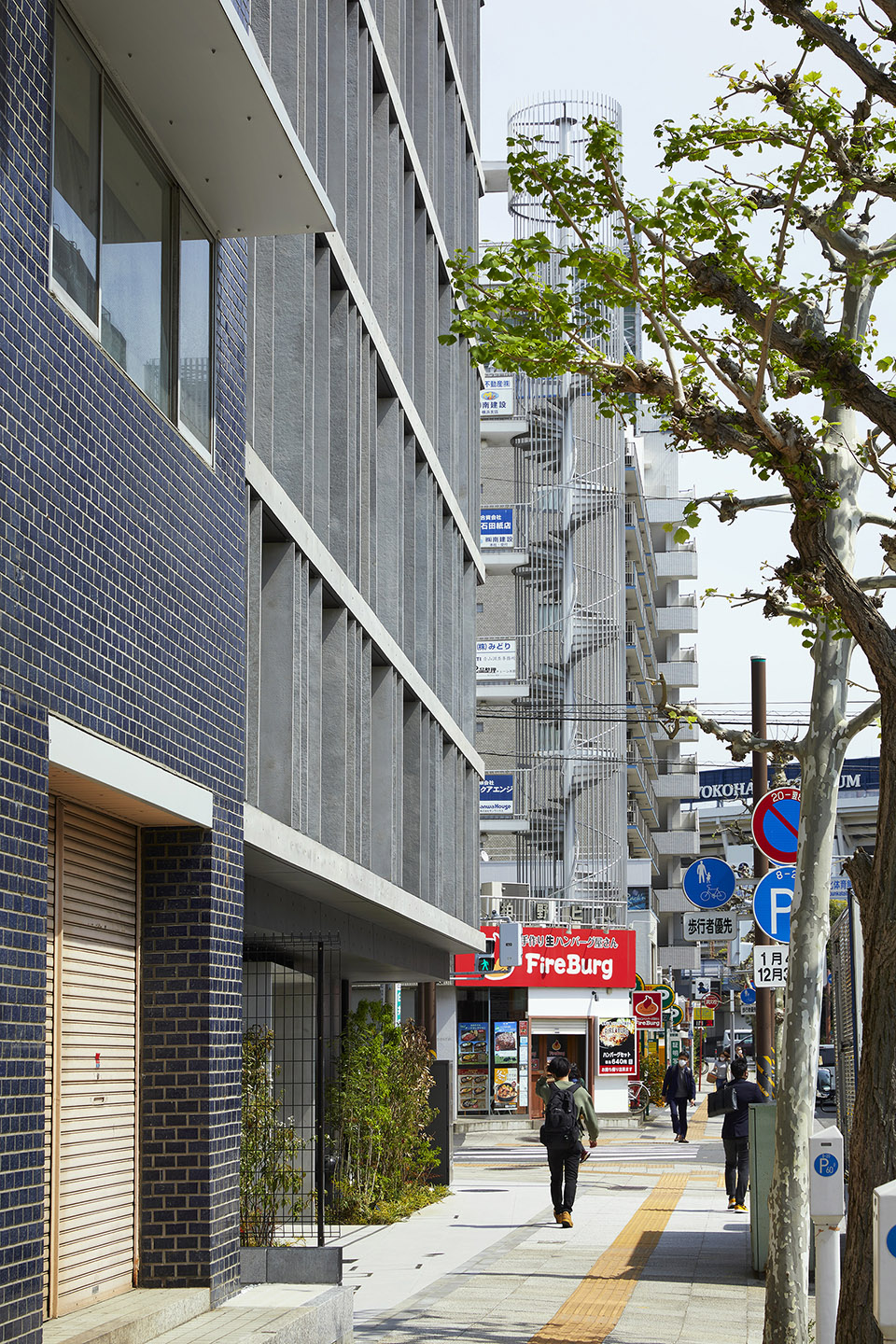
纵向的混凝土板以随机的方式置入立面,为后方的小套间提供了荫蔽。纤薄的板面以不张扬的姿态与各个单元的尺度(宽2.9米)相适应,其深度从200mm至900mm不等,一部分是遮阳的屏墙,一部分是分隔单元的墙板,还有一部分主要起到装饰作用,框选出朝向城市的视野。
▼立面示意图,facade diagram © KEY OPERATION INC. / ARCHITECTS
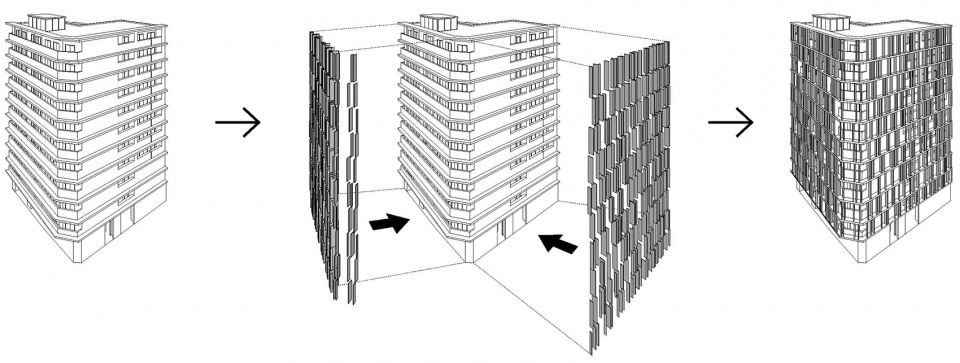

The vertical concrete panels have been added to the facade randomly, concealing the small units behind them. Panels, thin as they are, are unobtrusive, befitting the scale of the individual units. Each unit has a width of just 2.9 meters. The depth of panels vary between 200mm to 900mm, with some functioning as brise-soleil and some as dividing walls between different units, whilst others are more decorative, framing views of the city.
In Japan, balconies are almost obligatory for mansion blocks as a means of incorporating escape ladders to avoid excessive internal staircases, allowing for more space for individual flats. This results in them looking formulaic and monotonous. The concrete fins are deliberately made not to reflect the internal structure. Thin calcium silicate boards are discreetly tucked away behind these fins. In case of emergencies, they can be pushed down easily and the residents can escape using the escape ladders installed on each floor.
▼如纸般纤薄的混凝土叶片,the paper-thin concrete fins © Toshiyuki Yano

▼混凝土板面与各个单元的尺度相适应,the panels befit the scale of the individual units © Toshiyuki Yano
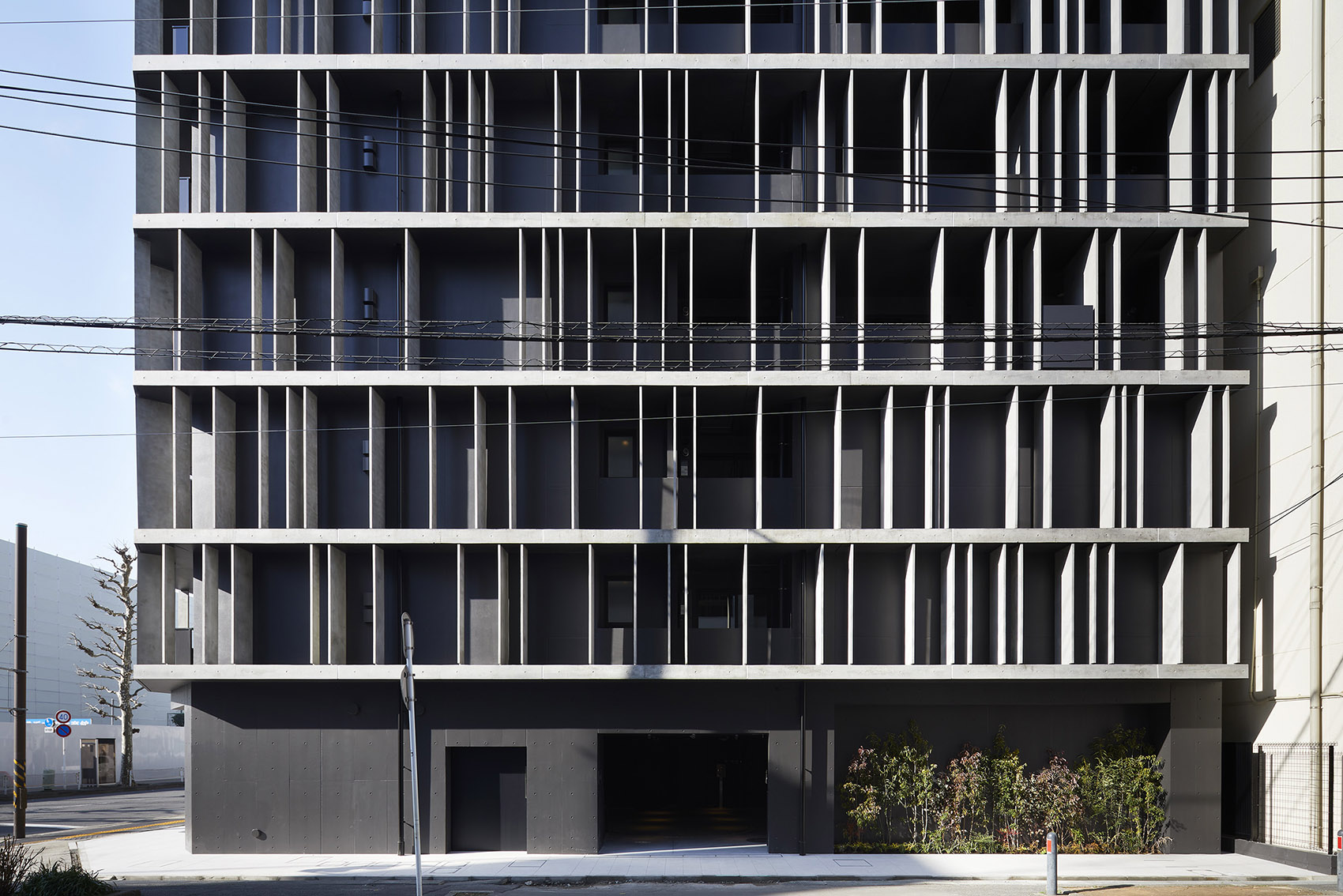
▼立面细节,facade detailed view © Toshiyuki Yano
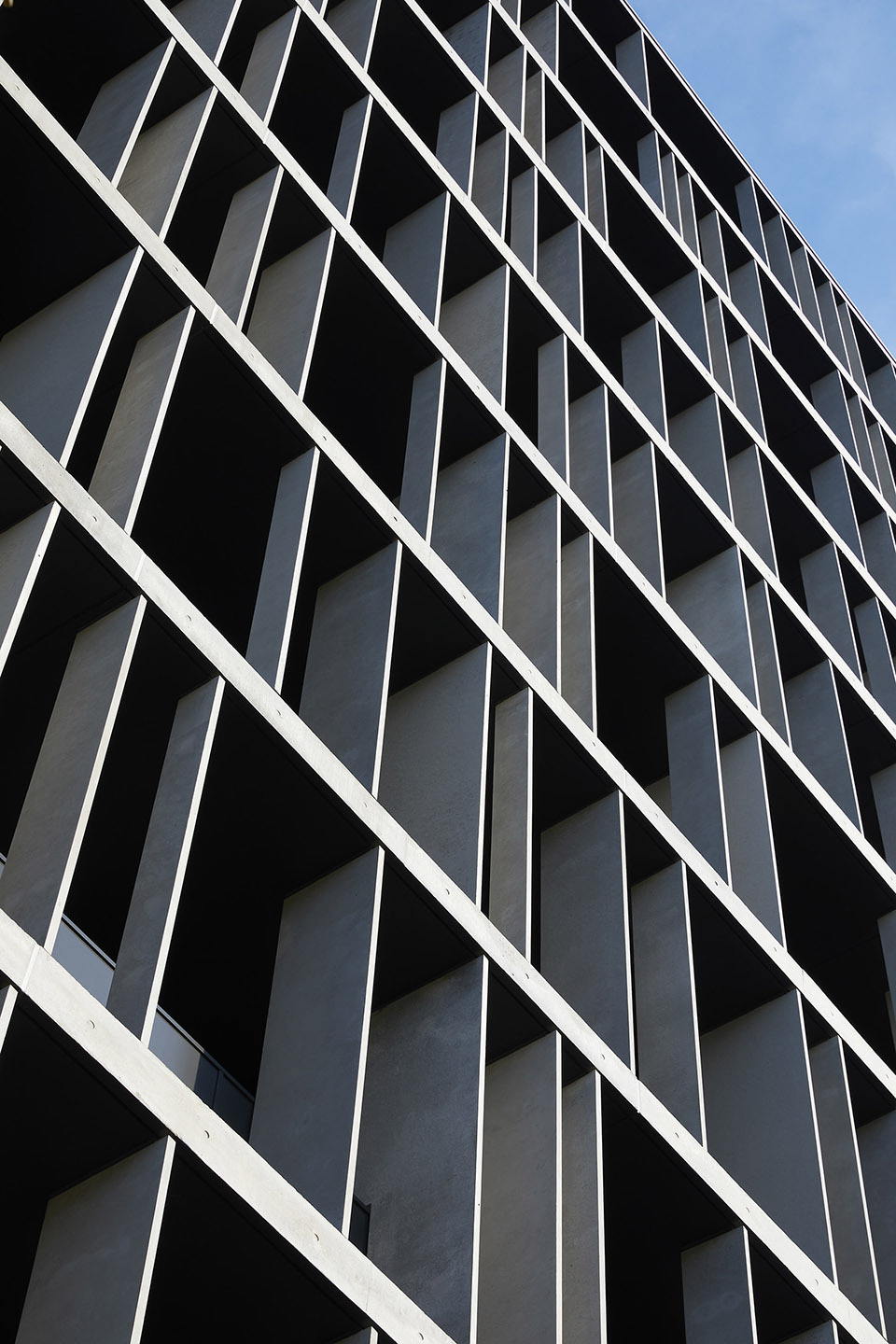

新建筑采用了和旧建筑以及周围大多数建筑相同的斜切角设计。二层楼板向外伸出,以便将围绕在建筑转角处的叶片包裹在内。这些板面是由混合预应力混凝土(HPC)支撑,这种材料是由日本的HPC Okinawa公司在2015年开发并获得专利。在该项目中所使用的板面是由鸟取县的Kooge Concrete公司制造。
The new building is chamfered as the original building was and most other corner buildings are in this area. We achieved this effect by extending the first floor slabs out of the facade then wrapping the fins around the corner of building. The concrete fins on the facade are made with Hybrid Prestressed Concrete or HPC. They have been developed and patented by the Japanese company HPC Okinawa in 2015. The panels used in this housing block have been manufactured by Kooge Concrete company in Tottori prefecture, south of Japan.
By using enmeshed carbon cables instead of the usual steel rods to reinforce concrete and by adding polypropylene fibre to strengthen the mixture, the panels can be made as thin as 40mm, as tall as 5 meters, and incredibly, still be load-bearing. Currently, however, the Japanese building regulations do not permit the use of these panels structurally.
▼斜切角设计,the chamfered volume © Toshiyuki Yano
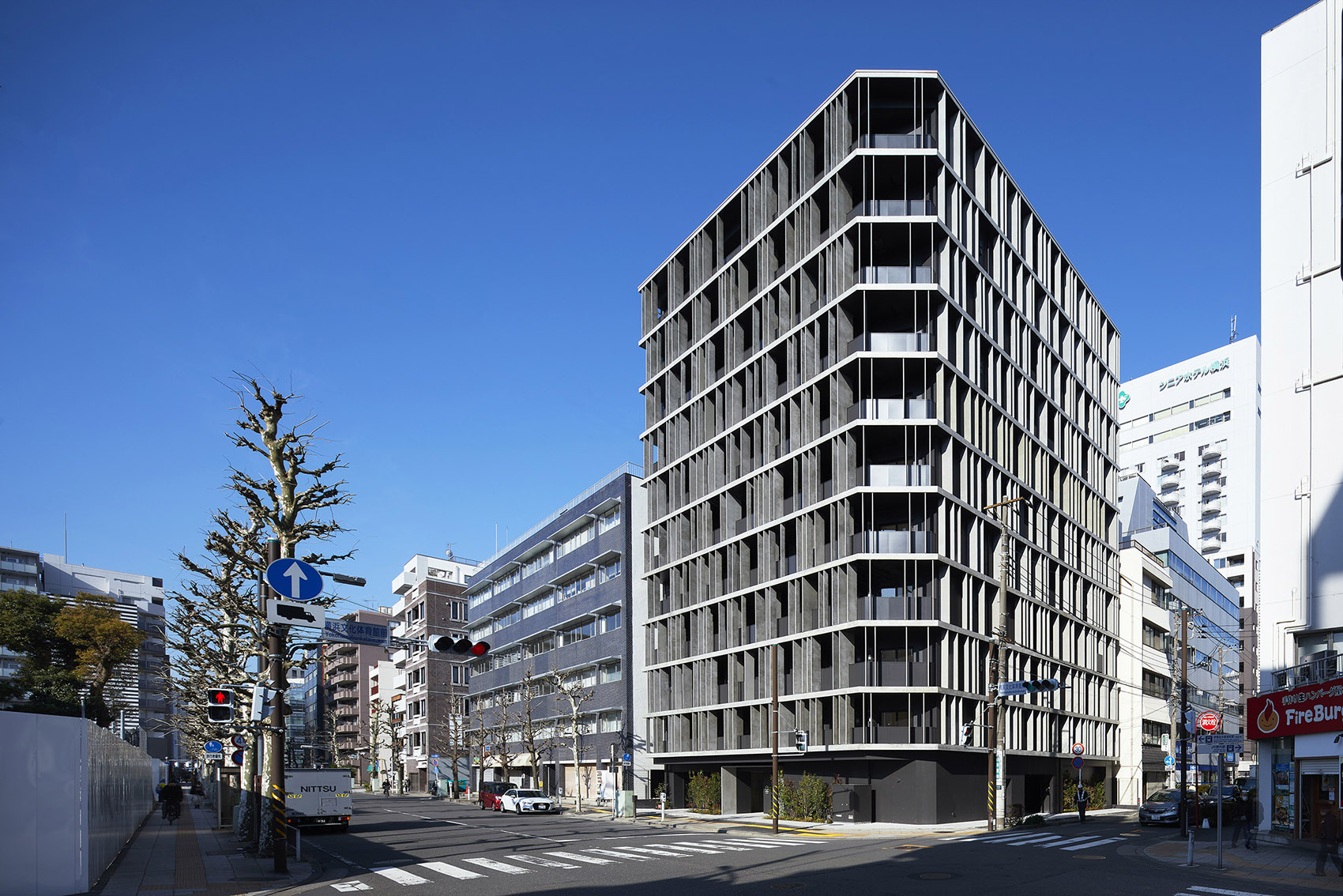
▼转角处立面,exterior view at the corner © Toshiyuki Yano
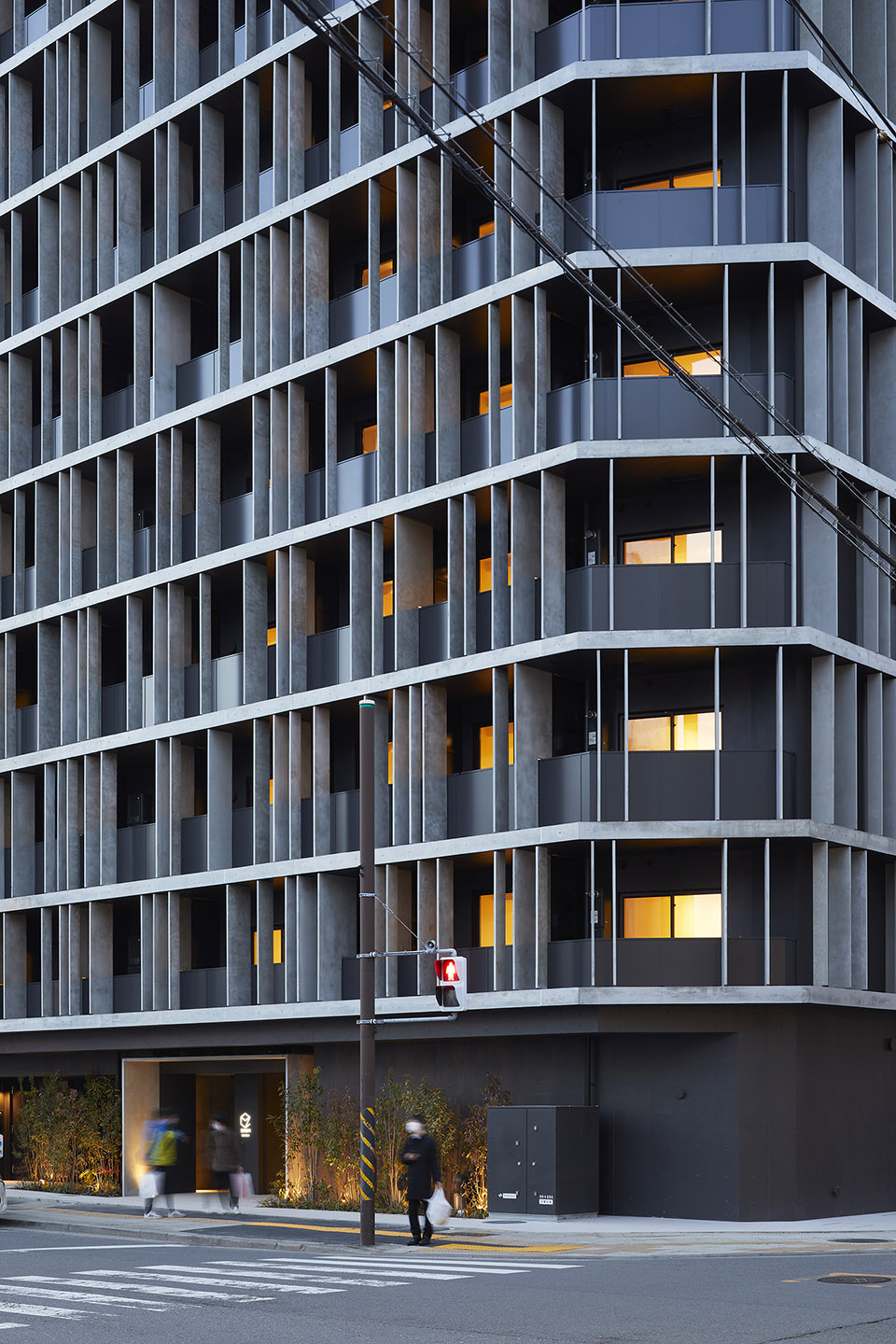
团队还使用HPC板面制作了一些独特的雕塑物件,用于照亮建筑内的公共入口区域。圆形的亚克力模块被嵌入到混凝土板面内,营造出星空般的效果。如此宽敞的入口区也可谓是东京和横滨地区的“单间公寓楼”通常所不具备的“奢侈享受”。
We also create special sculptural pieces using HPC panels to light up the communal entrance area inside the building. We cast circular acrylic moulds into the concrete panels and they light up like the night sky with stars. The generously-proportioned entrance area is also an added luxury not usually granted to ‘one-room mansion’ blocks in built areas such as Tokyo and Yokohama.
▼建筑入口,entrance © Toshiyuki Yano
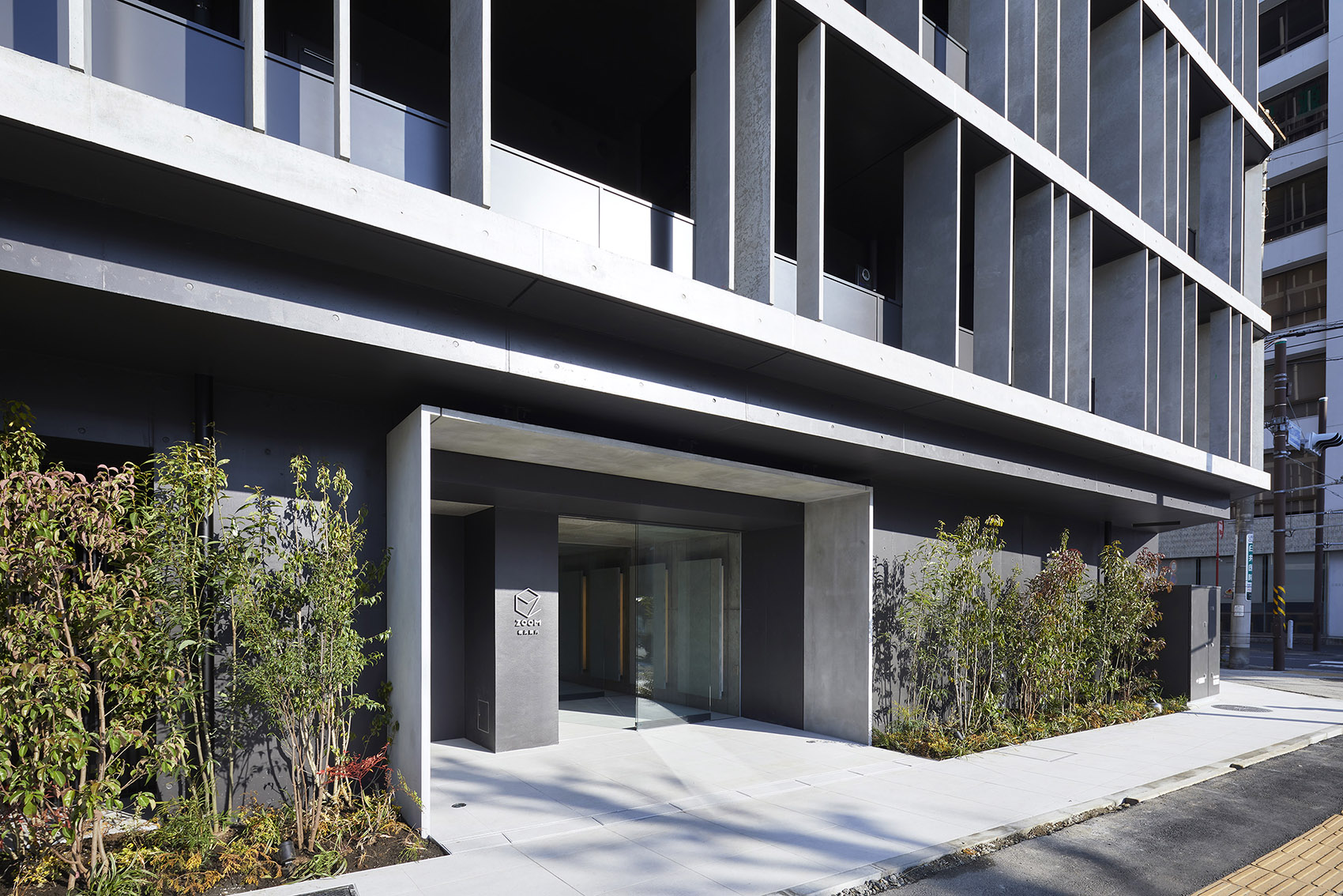
▼入口夜景,entrance night view © Toshiyuki Yano
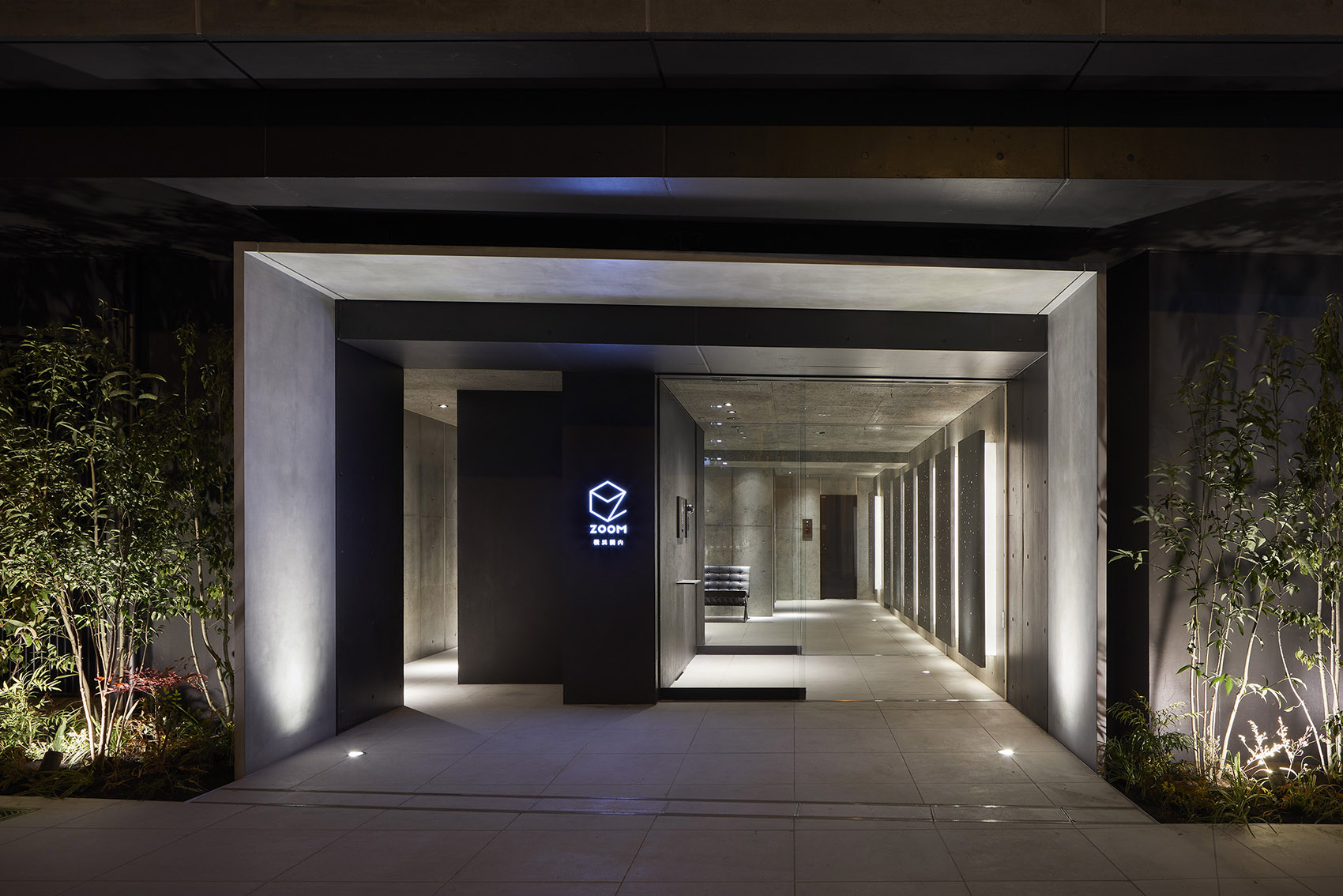
▼宽敞的入口区,the generously-proportioned entrance area © Toshiyuki Yano
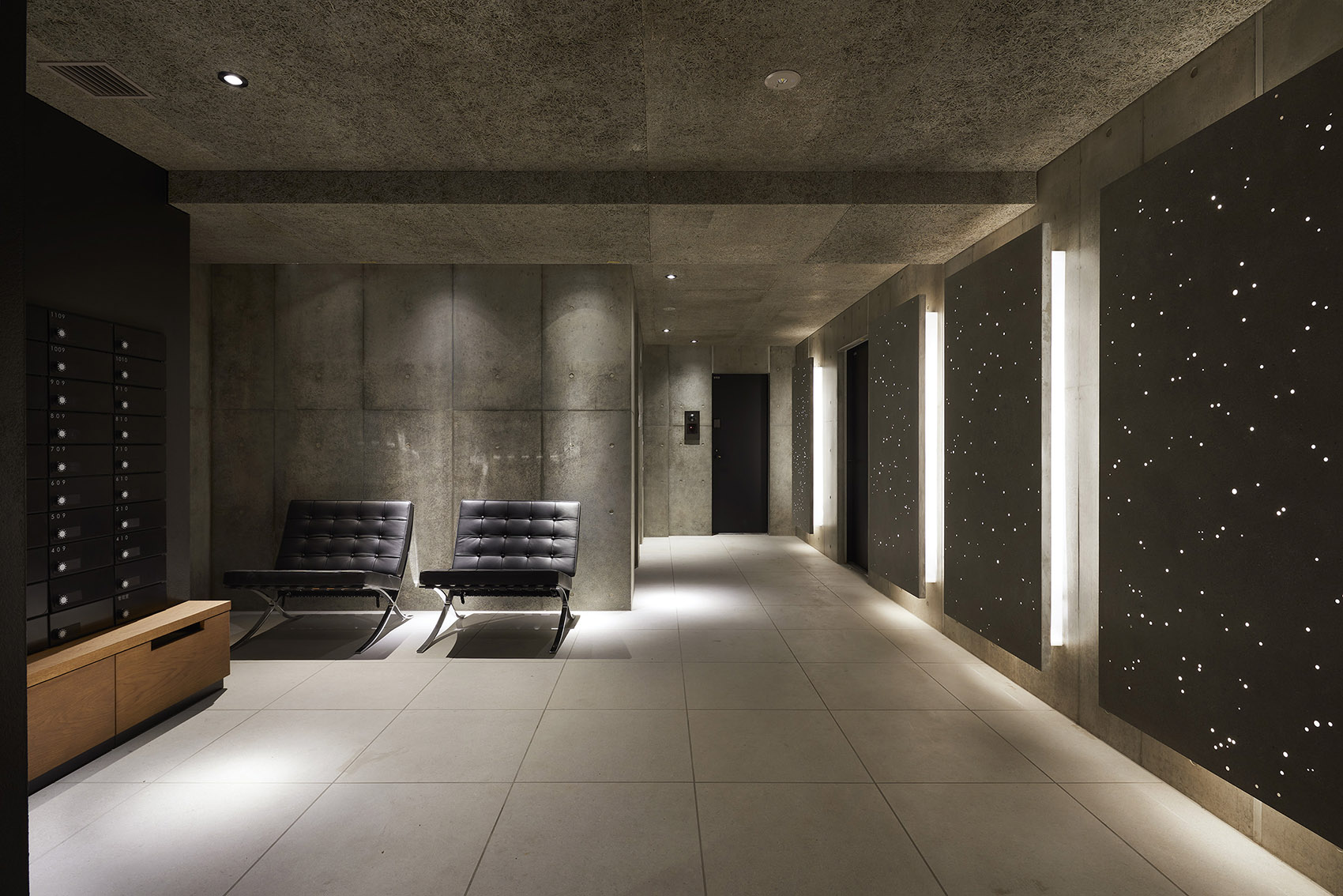

▼使用HPC板面和亚克力模块制造的雕塑装置,营造出星空般的效果 © Toshiyuki Yano sculptural pieces made of HPC panels and acrylic moulds light up like the night sky with stars
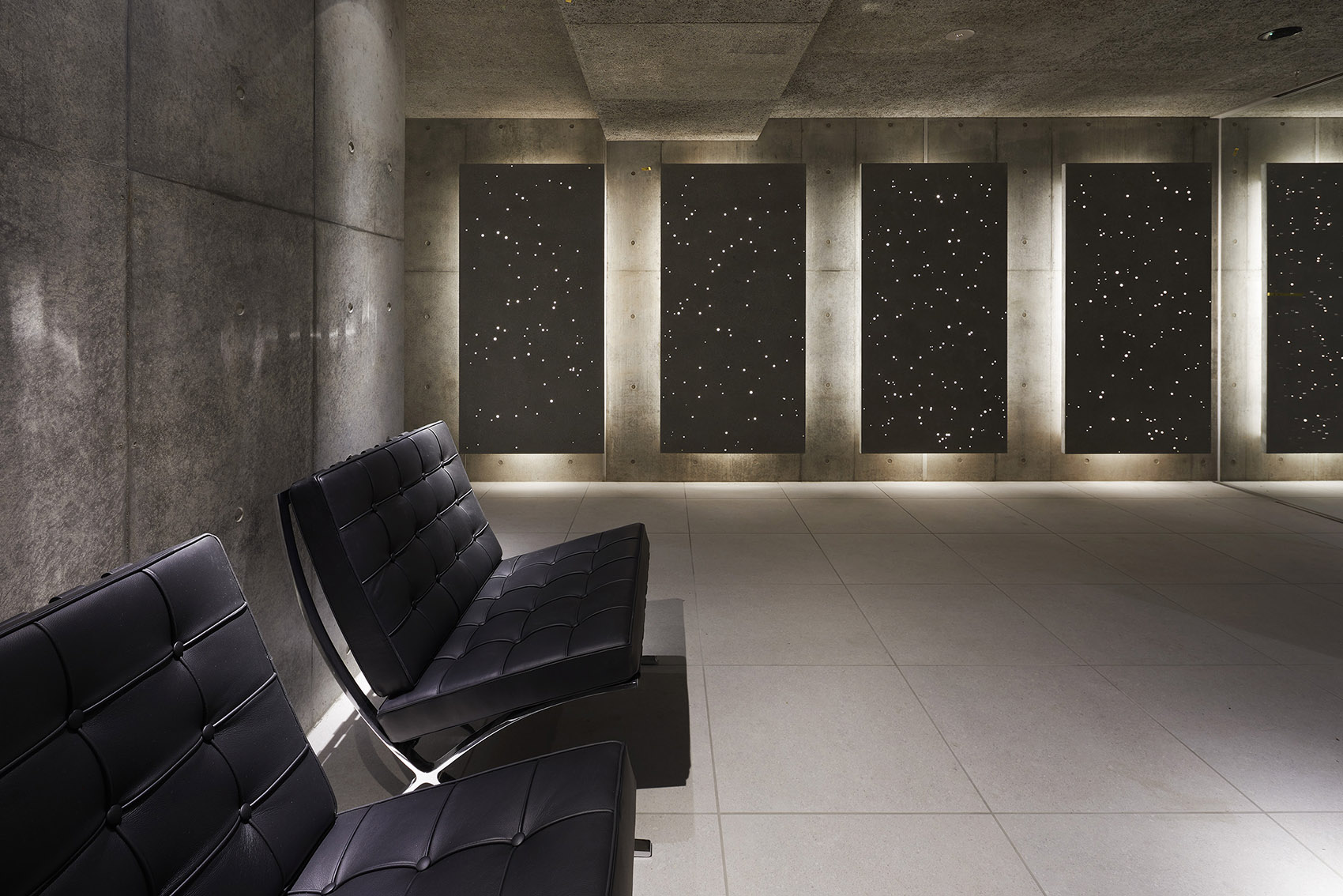
▼公寓走廊,residence corridor © Toshiyuki Yano
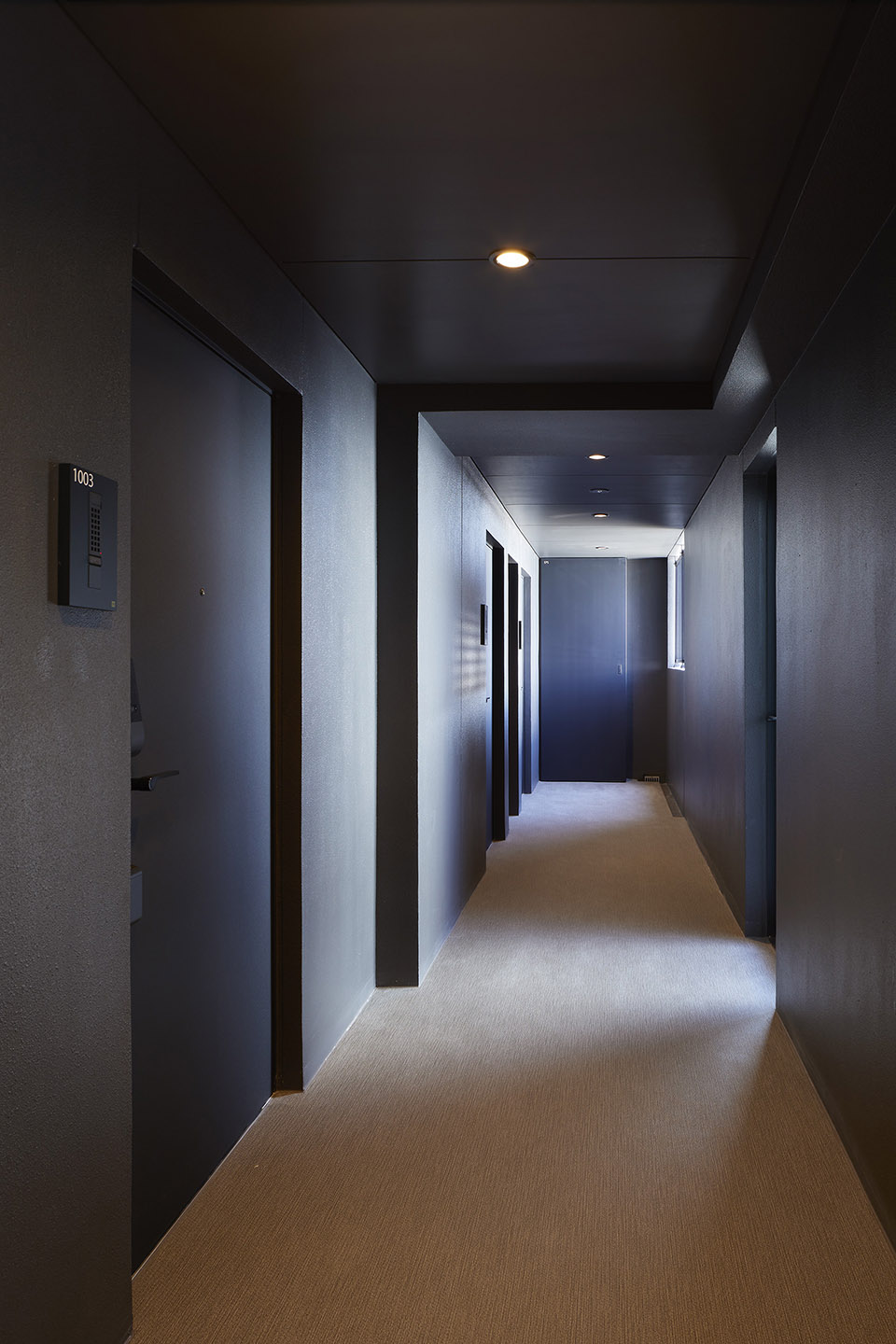
大楼的顶层包含一个尺度更大的单元,设有天窗和额外的卧室。所有的公寓单元均采用简洁的黑白灰色调进行装饰,房间铺设木地板。厨房和公用空间被整洁地安置在门厅侧面,并安装了可以交叠滑动的门板,以便在腾出更多空间的同时保留一定的隐私性。
One unit on the top level of the residence is spacious with sky lights and extra bedrooms. All the flats have been decorated with a minimum palette of white, grey and black. Rooms are laid with timber flooring. Kitchen and utility spaces have been tucked away neatly along the entrance hallway and doors are made to slide over one another at corners to make more space and provide some form of privacy.
As mentioned above, the Japanese mansion blocks tend to look very similar due to the requirement of the balconies on the facade. We took extra care to make sure that the boilers and air-conditioning units placed outside on the balconies (per the norm in Japan) as discreetly tucked away as possible. Handrails, exterior walls and the balcony ceilings have been painted black. We wanted to bring out the light grey colour of concrete.
▼顶层公寓,residential unit on the top level © Toshiyuki Yano

▼门厅和厨房之间安装了滑动门,sliding doors are installed between the kitchen and entrance hallway © Toshiyuki Yano

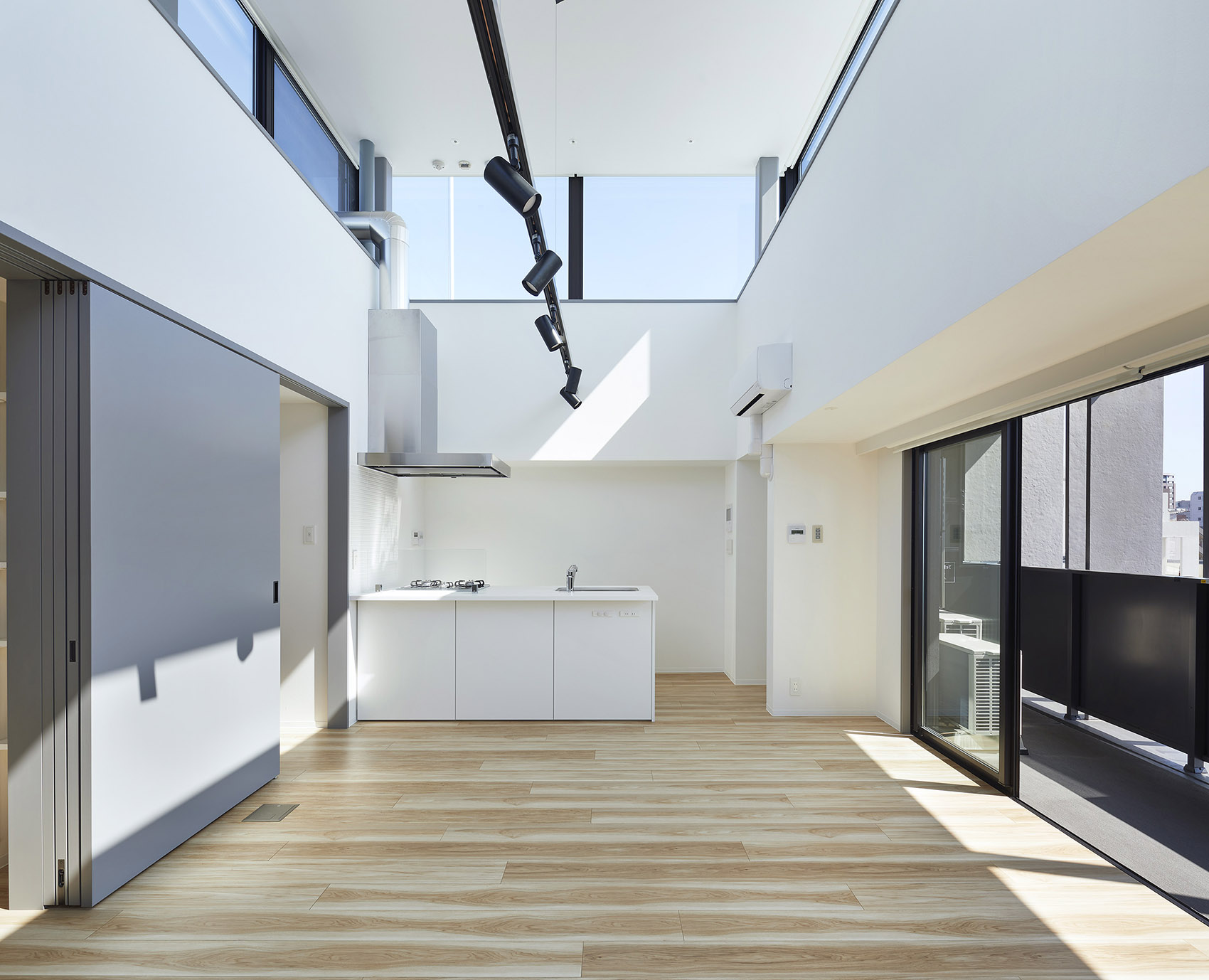
▼单间公寓,studio flat © Toshiyuki Yano
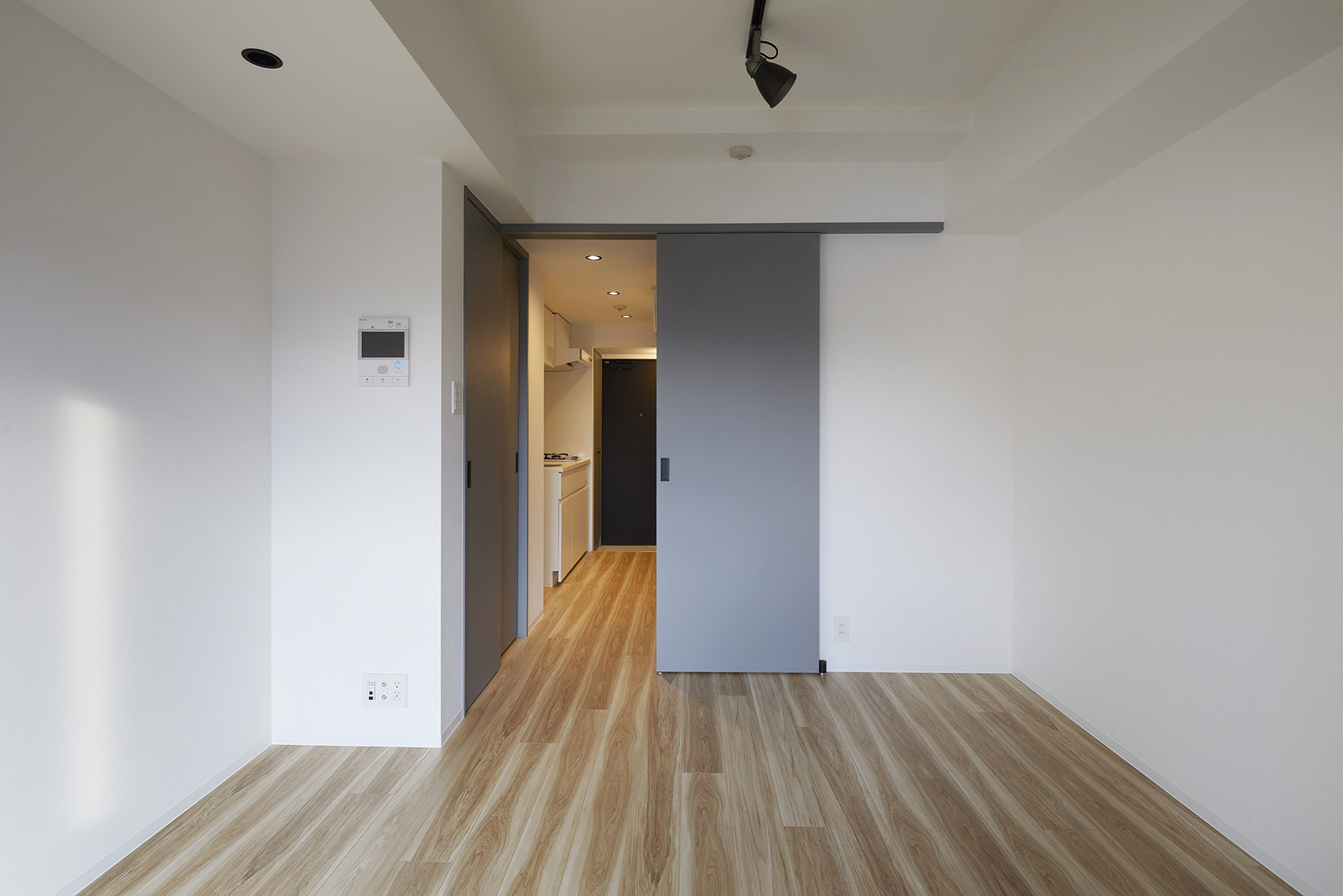

▼玄关和厨房,hallway and kitchen © Toshiyuki Yano
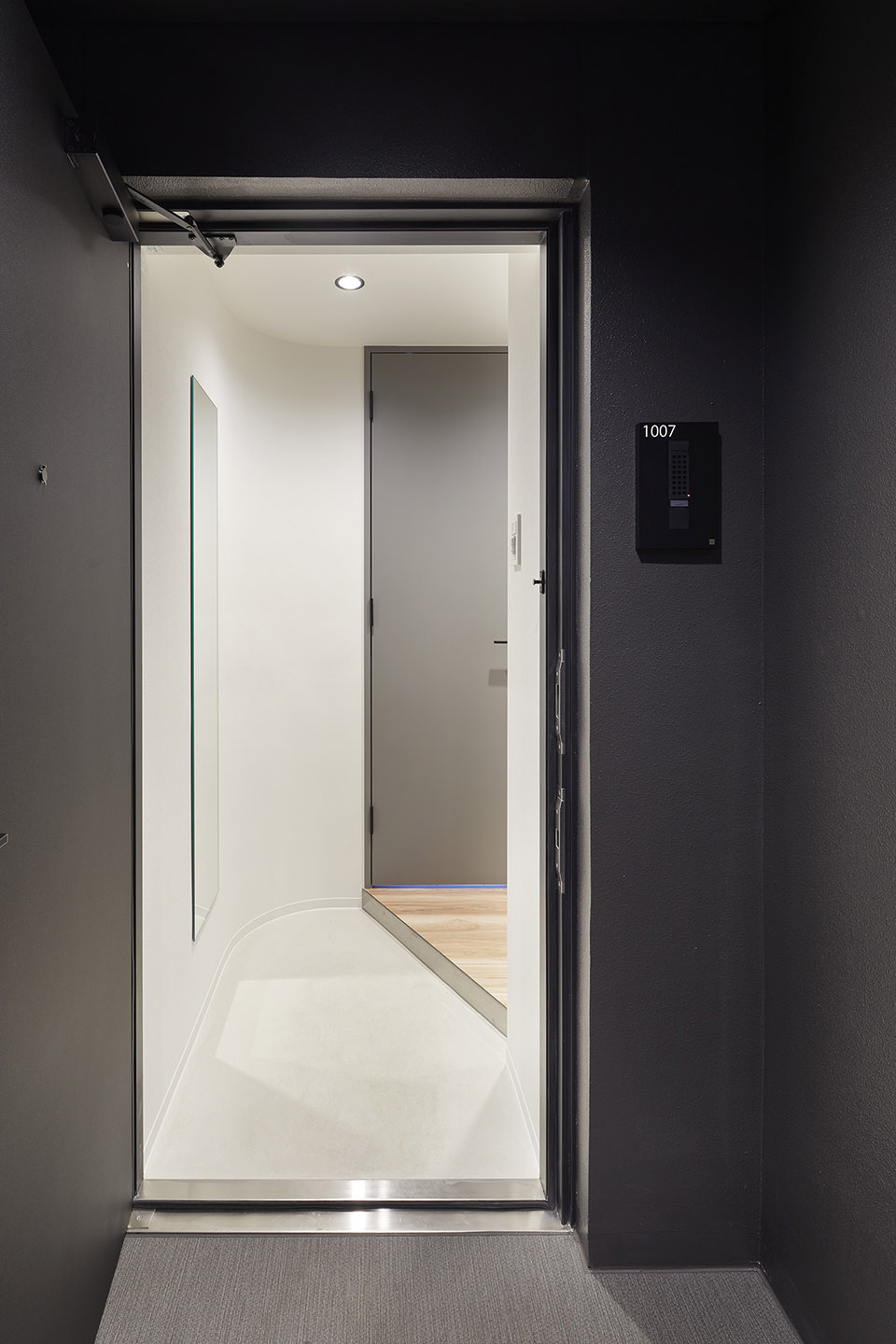
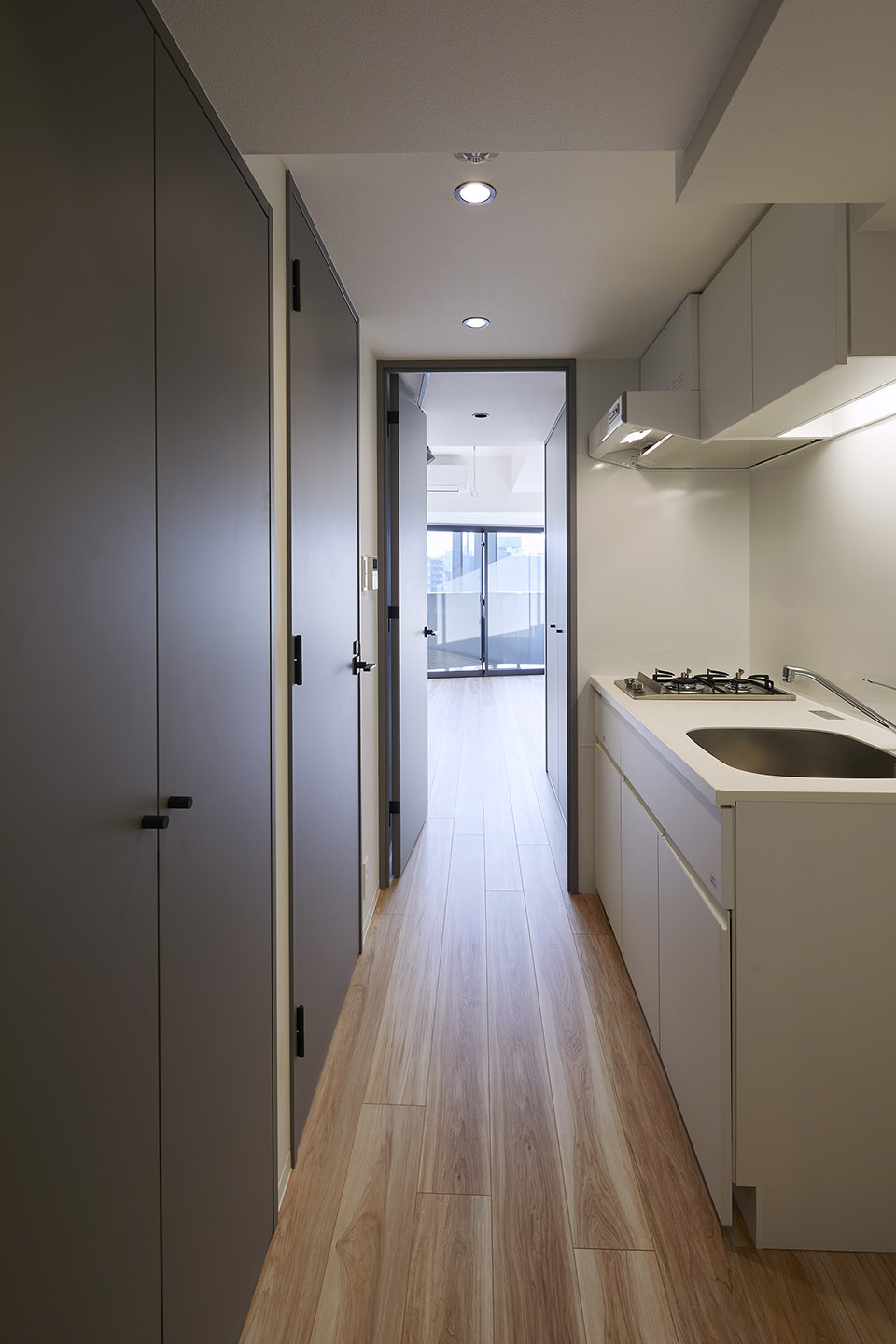
▼阳台,balcony © Toshiyuki Yano
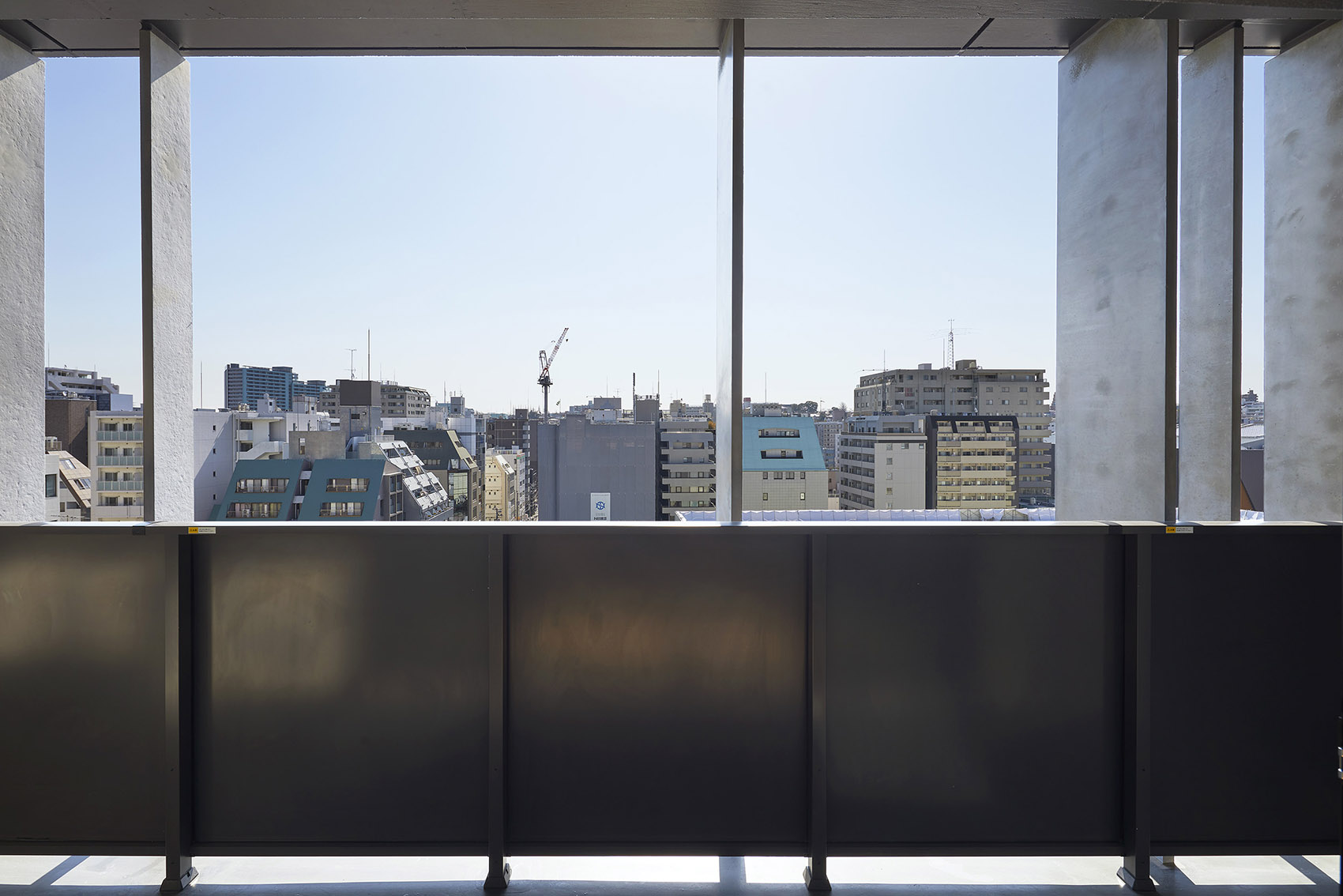
▼朝向城市的视野,view to the city © Toshiyuki Yano
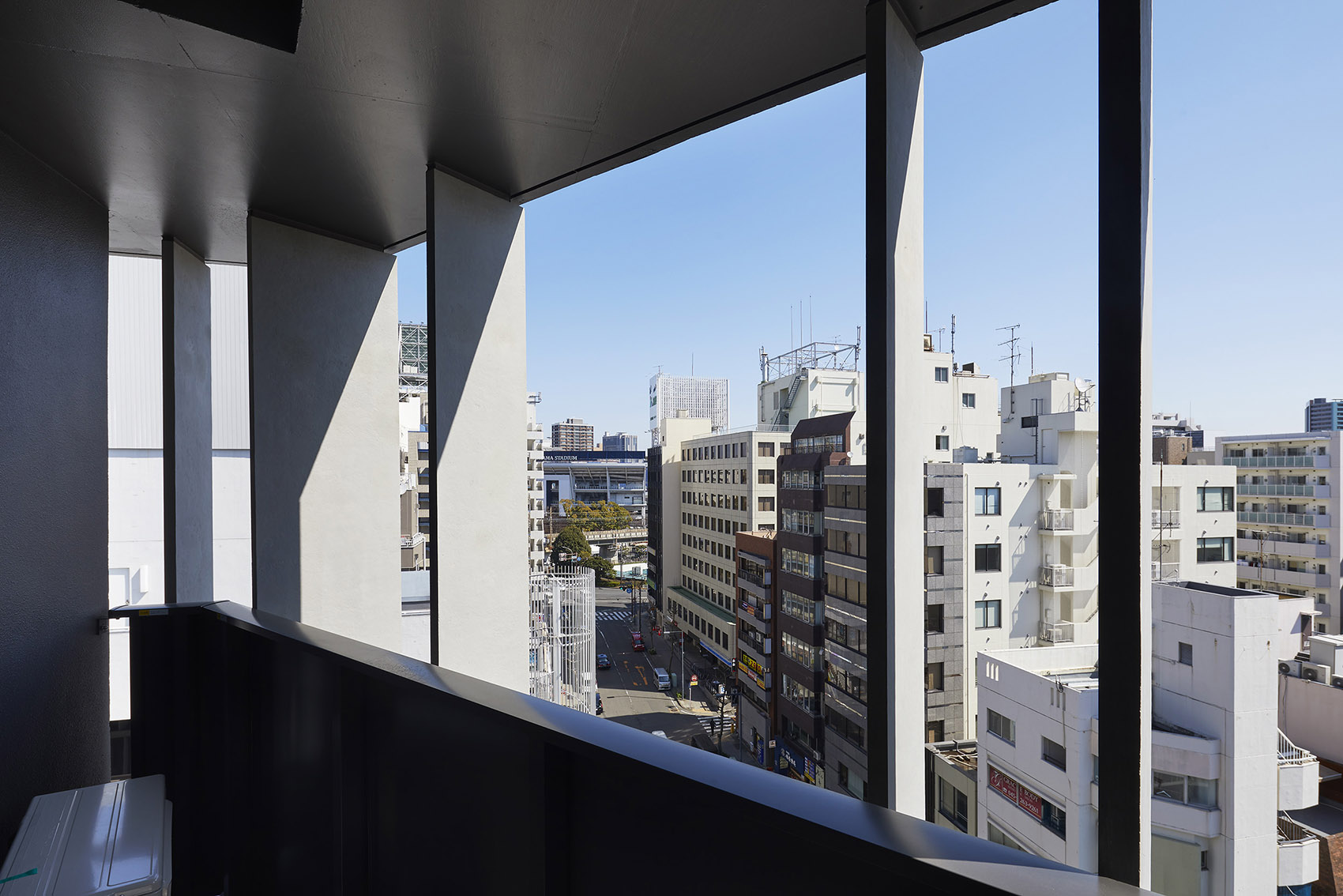
从正立面望向整个建筑时,这些混凝土叶片就像是武士的剑一般锋利;而从侧面看时,则呈现为一系列富有质感的混凝土表面,并将随着光线的强度变化而形成不同的观感。
When you look at the entire building from the front elevation, these concrete fins appear as sharp as a Samurai’s sword cutting through the air. If you look at the buildings from the side, however, you can begin to appreciate the texture of the exposed concrete, which changes its appearance with the intensity of the light.
Facade designs tend to reflect the interior structures but we wanted to experiment and play against such a norm so that the new building resonated with the post-war buildings in the area. The individual flats feel more open and connected with the outside world through these thin concrete panels, retaining a sense of scale that is both human and urban.
▼立面夜间效果,facade by night © Toshiyuki Yano

▼大楼夜景,night view of the building © Toshiyuki Yano
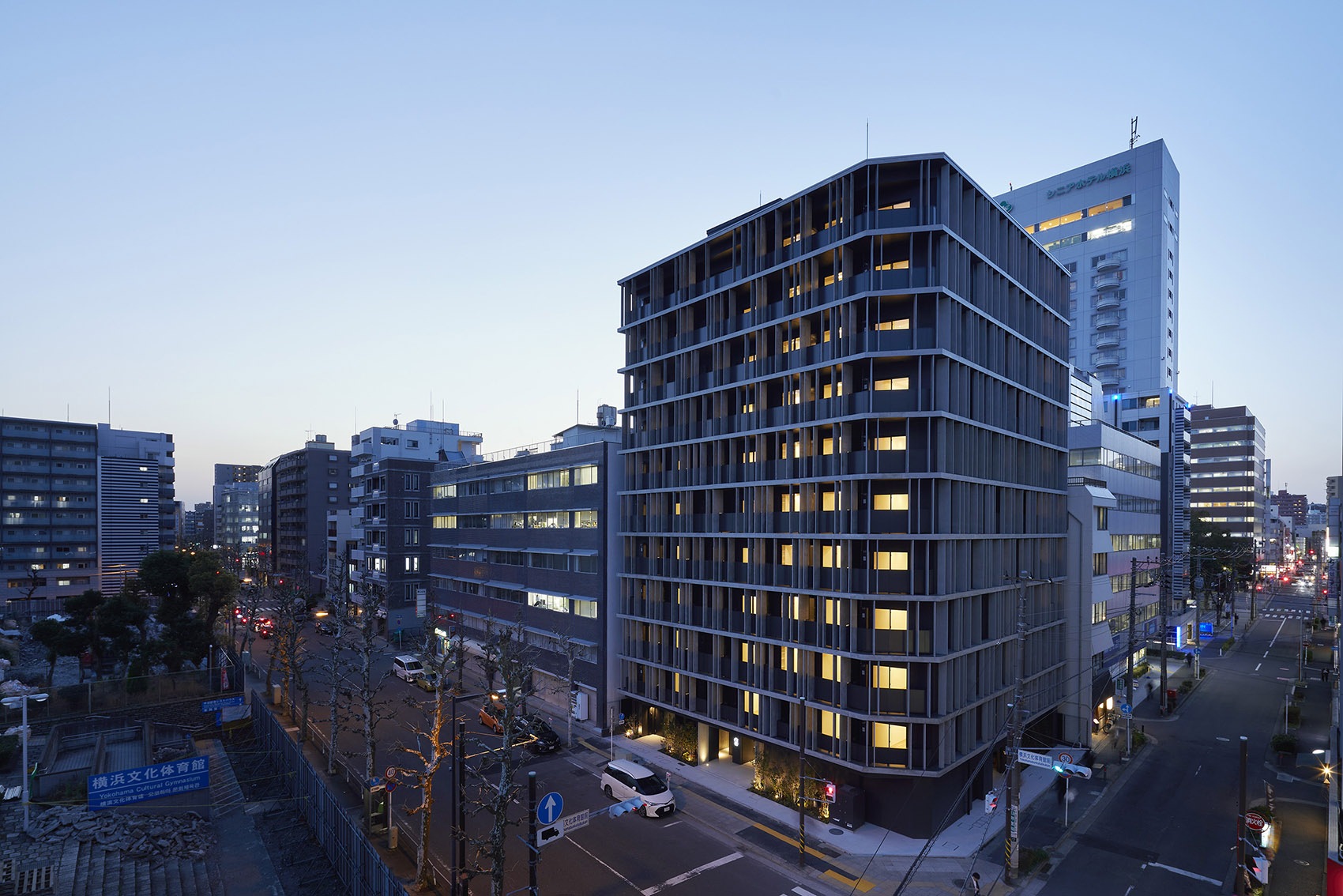
▼立面日照分析,solar radiation diagram © KEY OPERATION INC. / ARCHITECTS
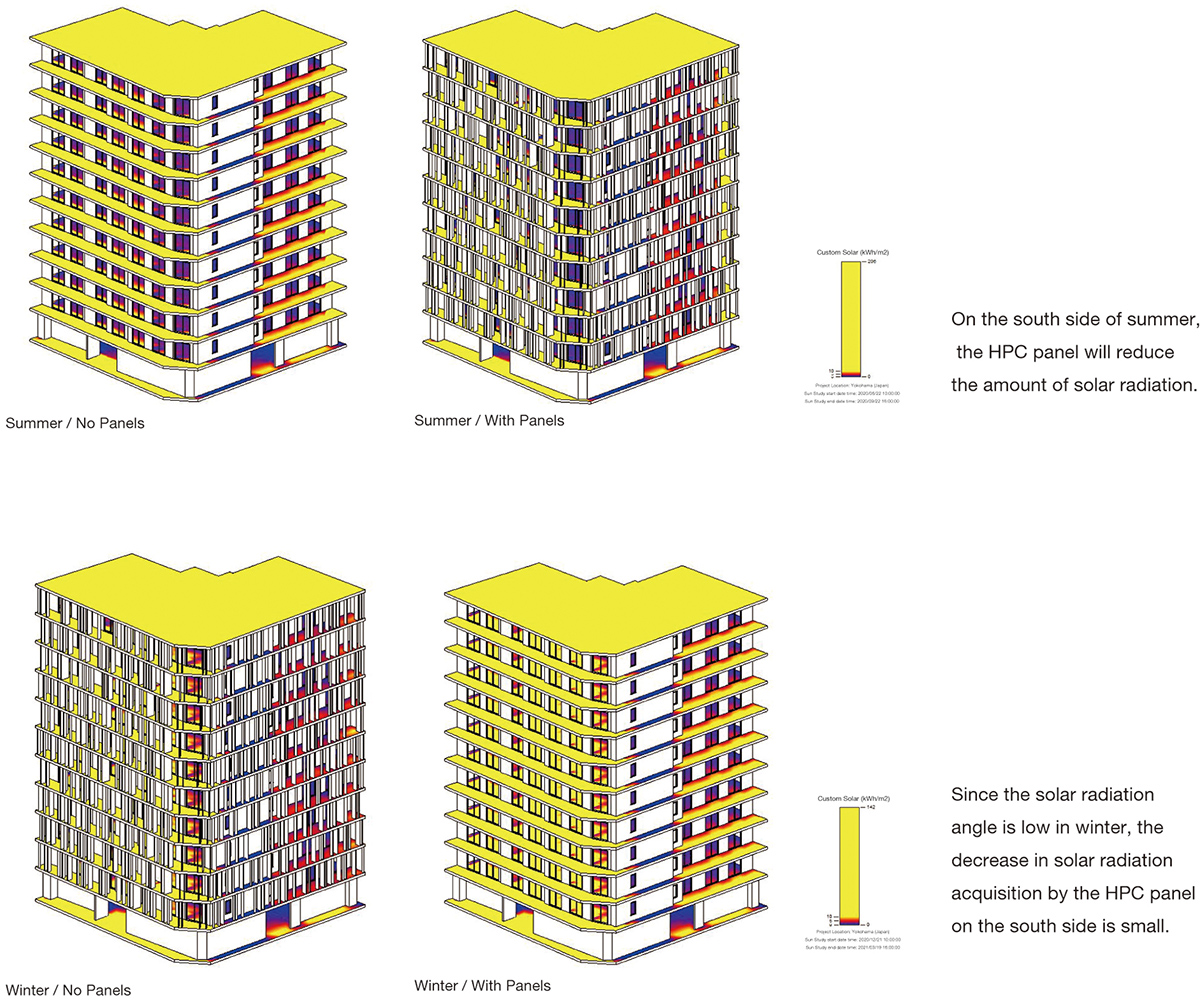
▼大楼各层平面图,floor plans © KEY OPERATION INC. / ARCHITECTS
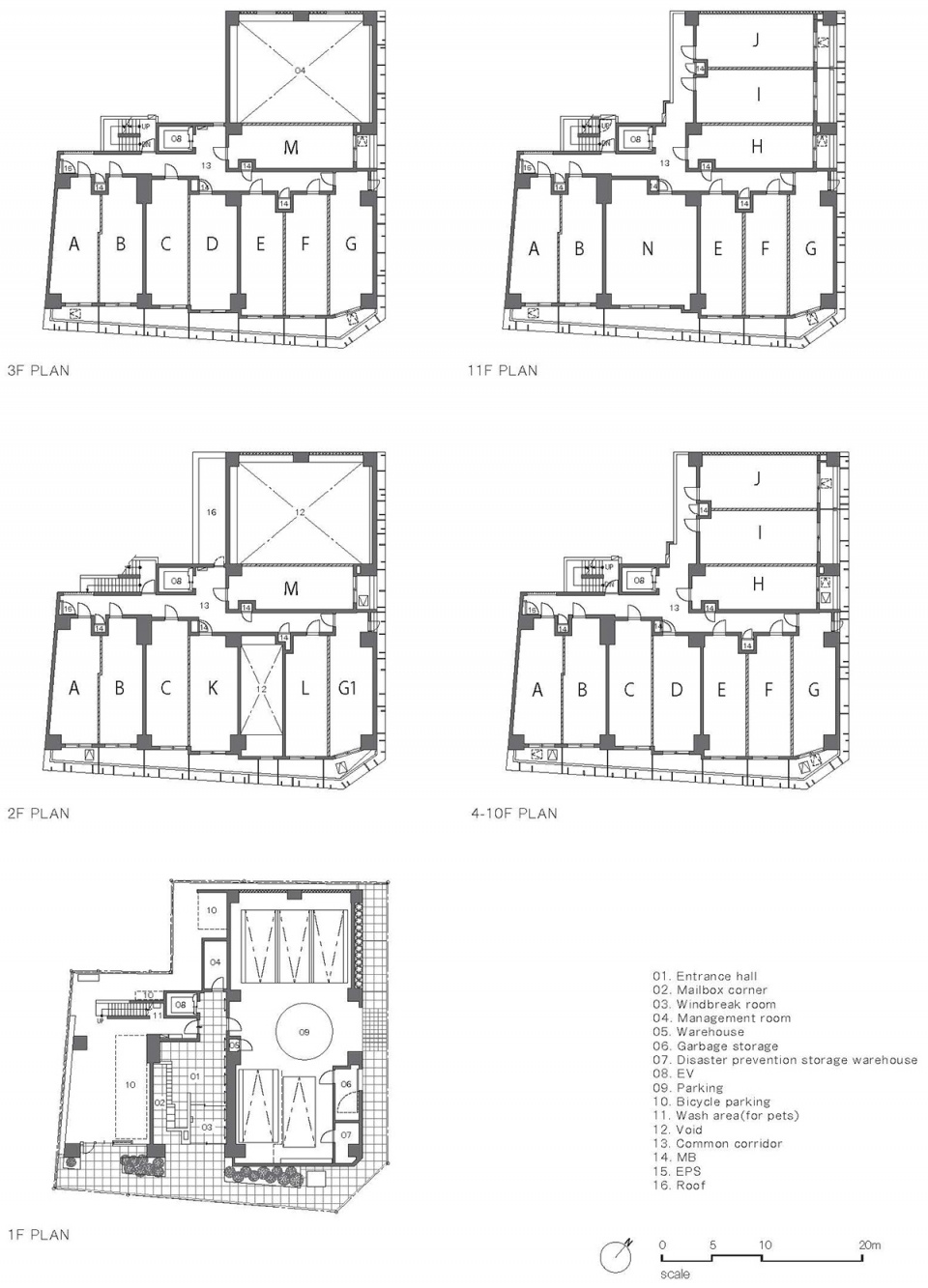
▼公寓标准平面,flat plans © KEY OPERATION INC. / ARCHITECTS
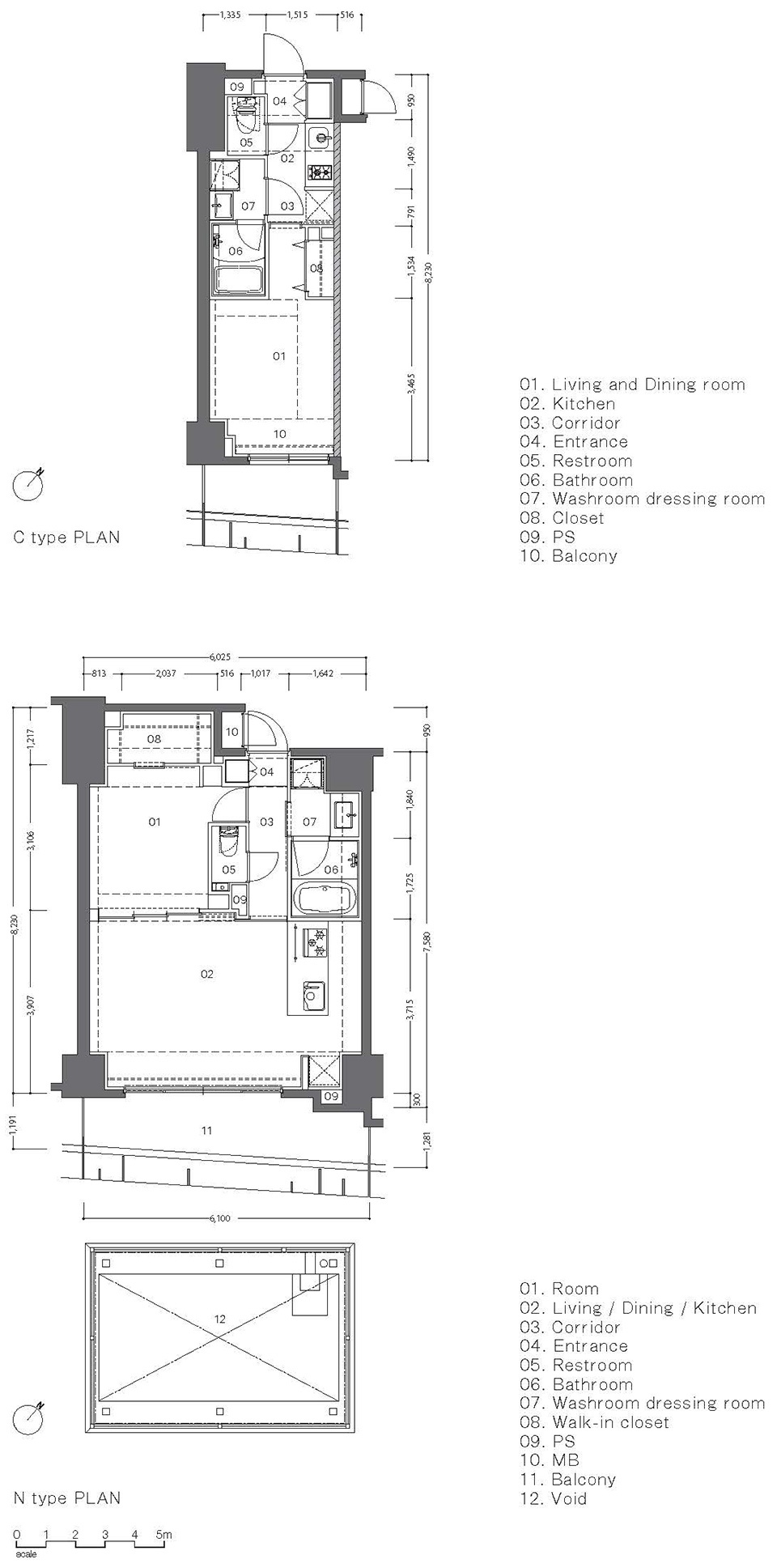
▼立面图,elevations © KEY OPERATION INC. / ARCHITECTS
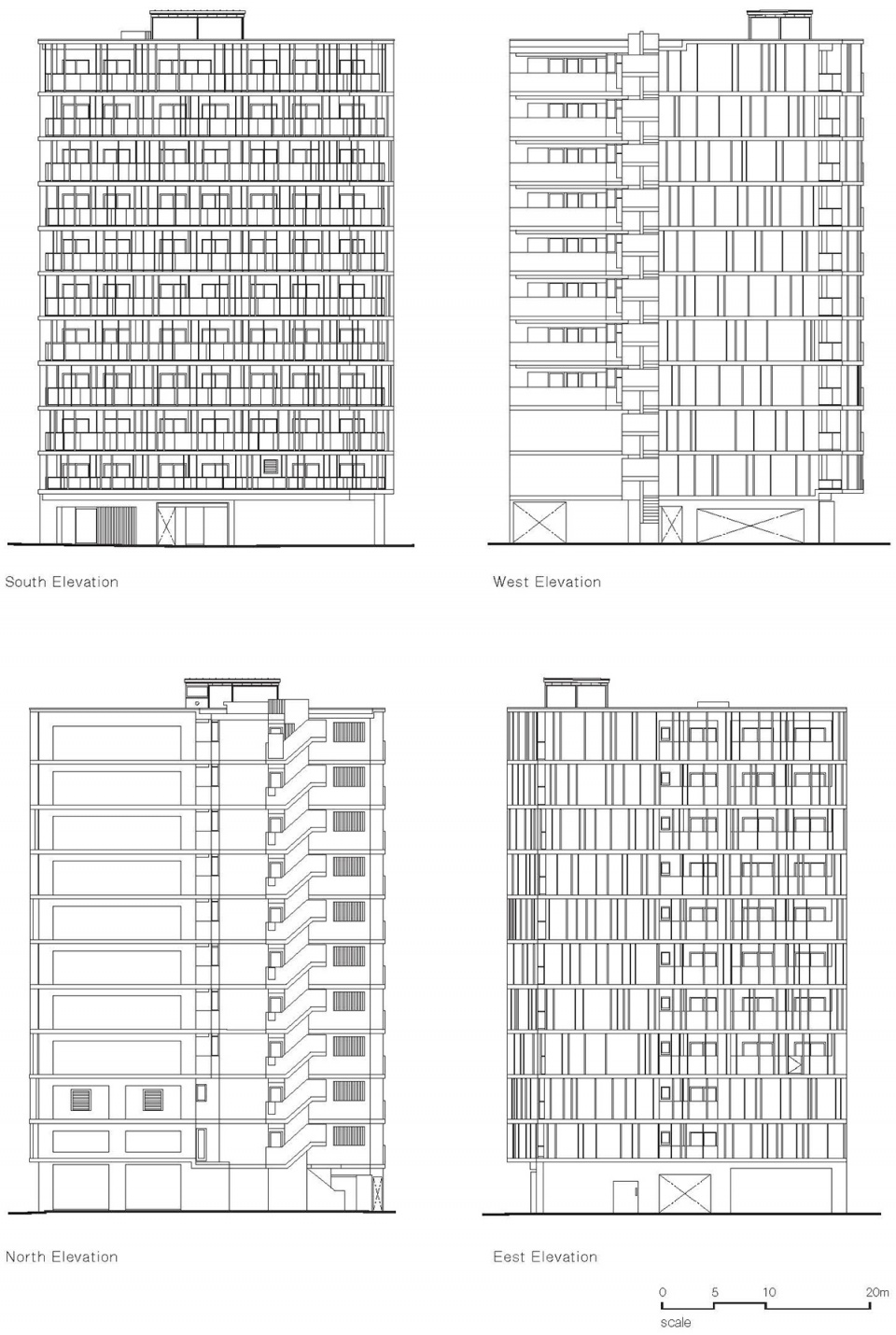
Architects: KEY OPERATION INC. / ARCHITECTS Contractor: Fujiki Komuten Structural Engineering: Delta Structural Consultants Service Engineering: Comodo Service Planning Area: 3251 m² Year: 2021 Photographer: Toshiyuki Yano
